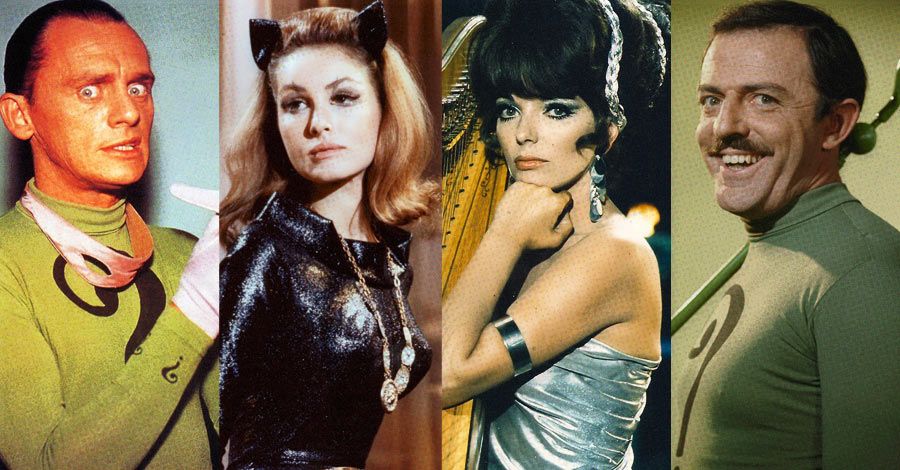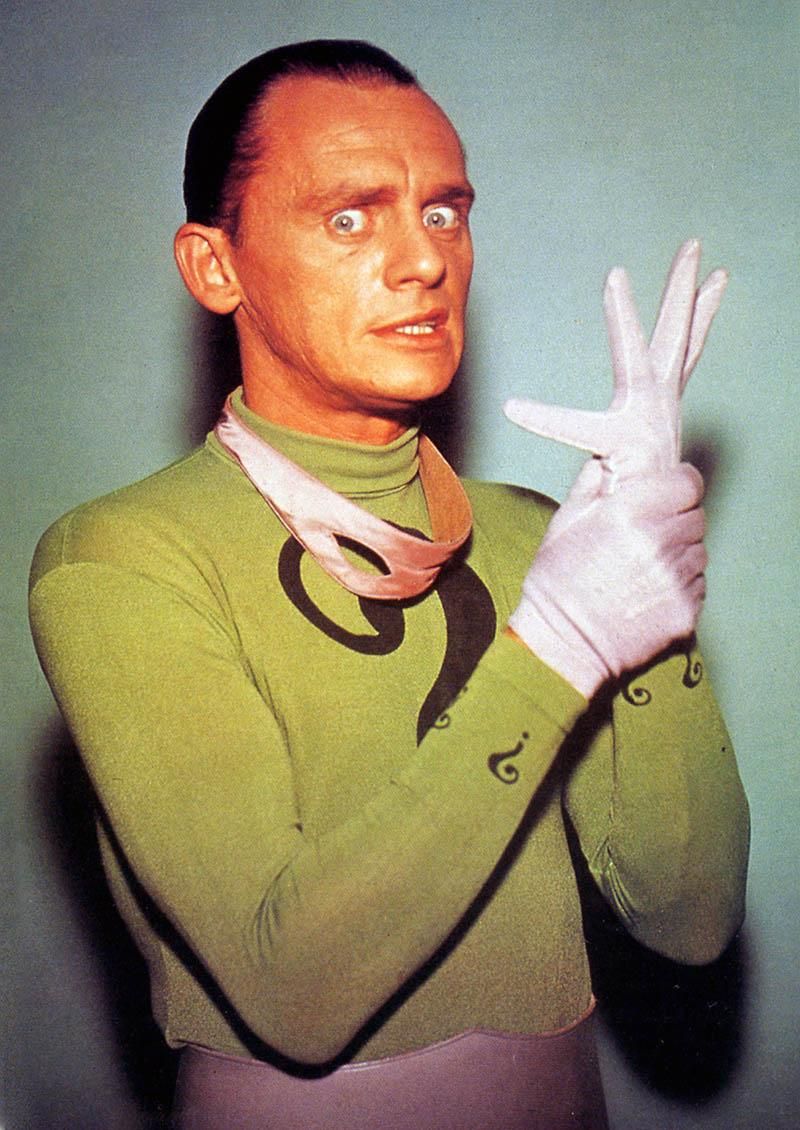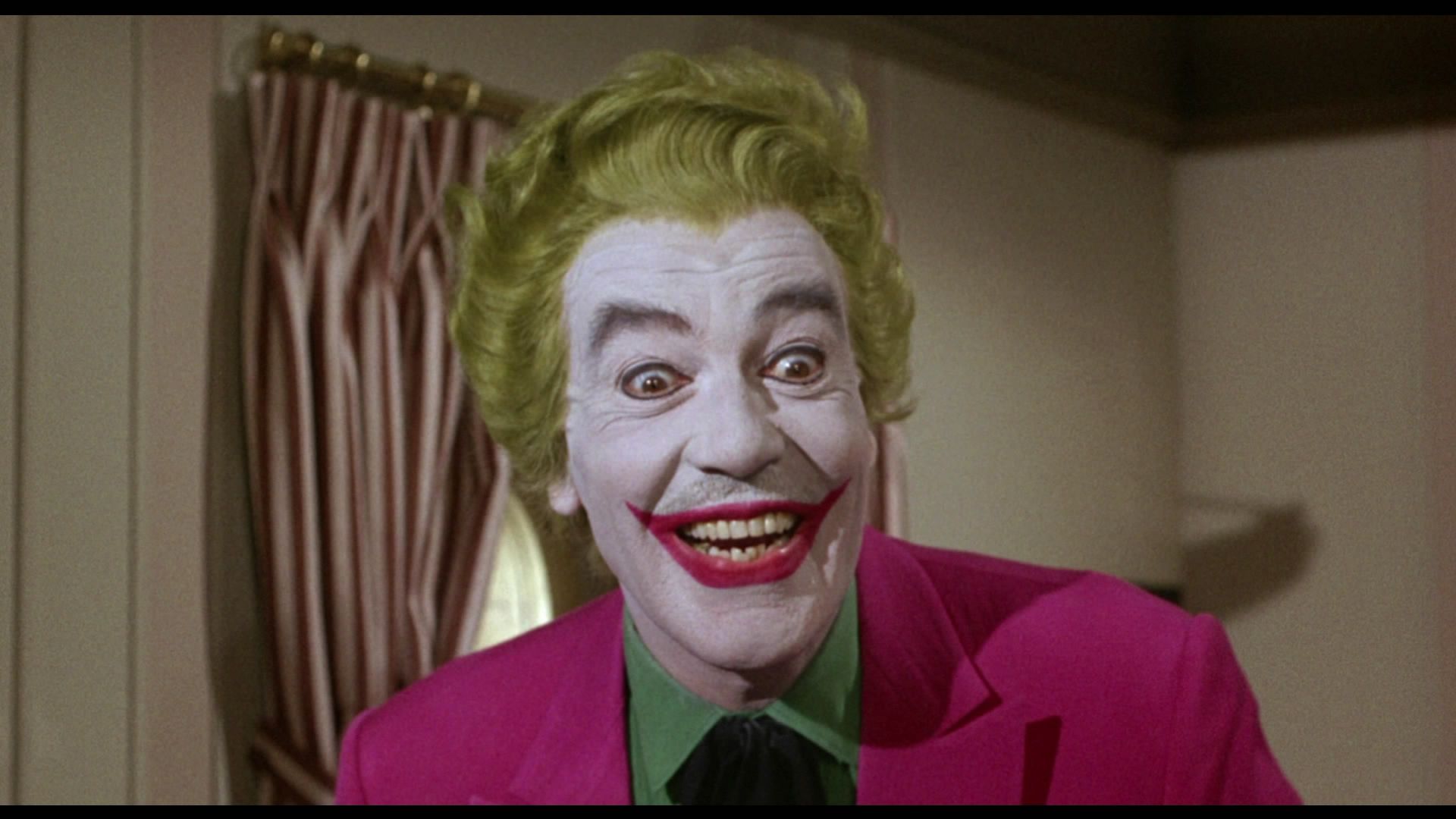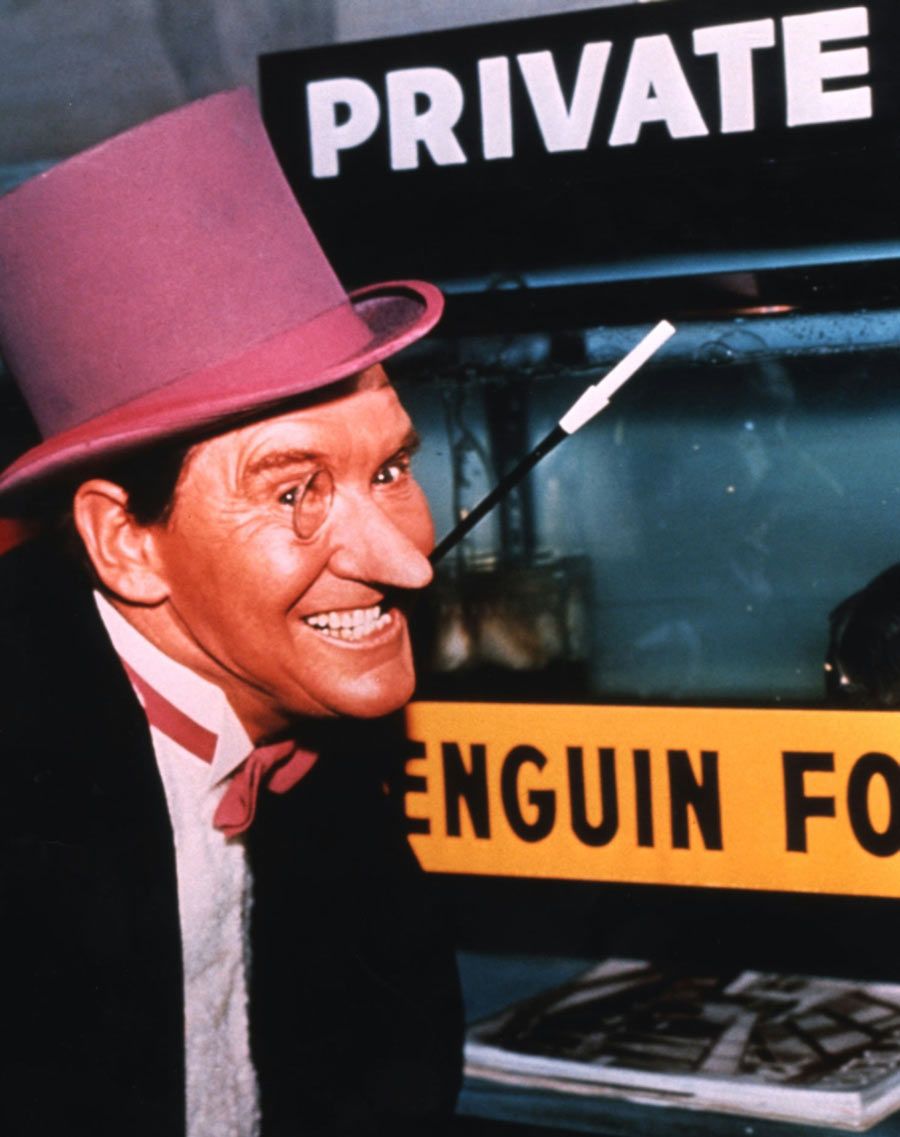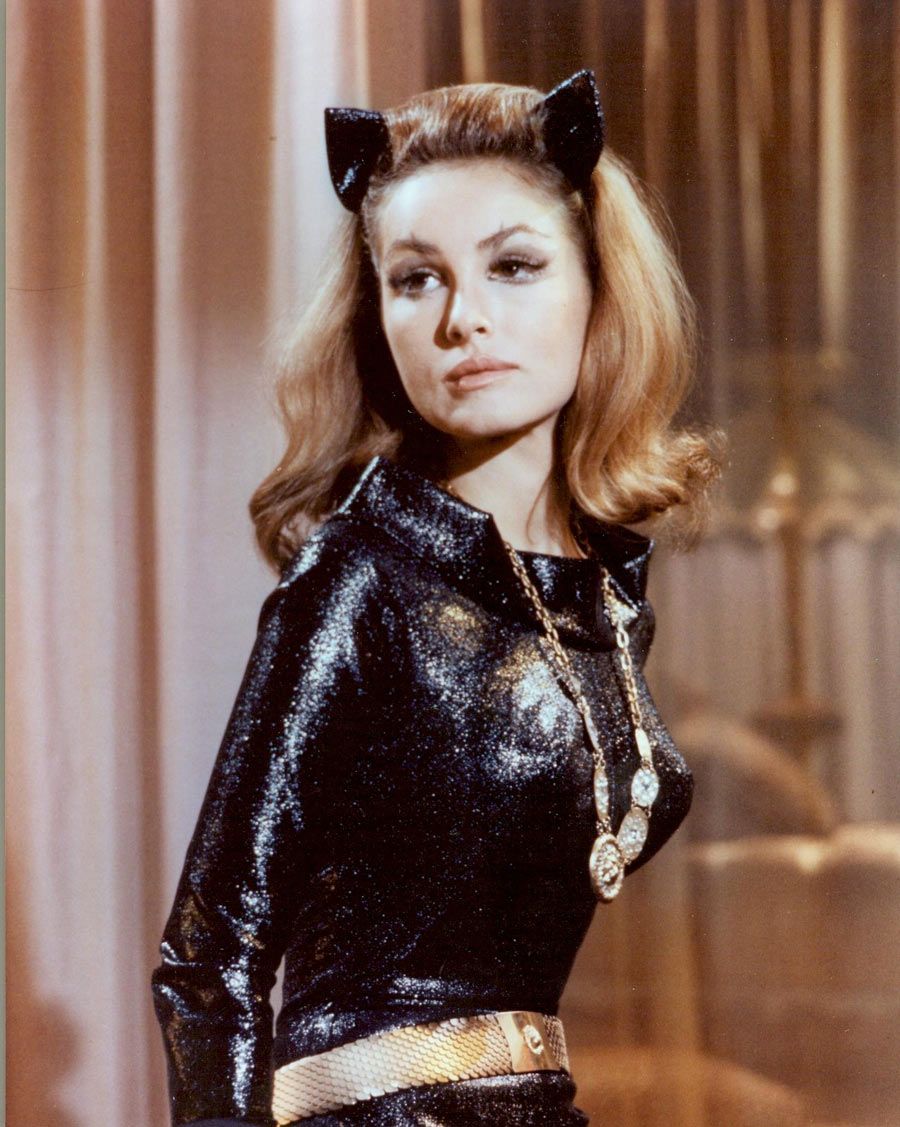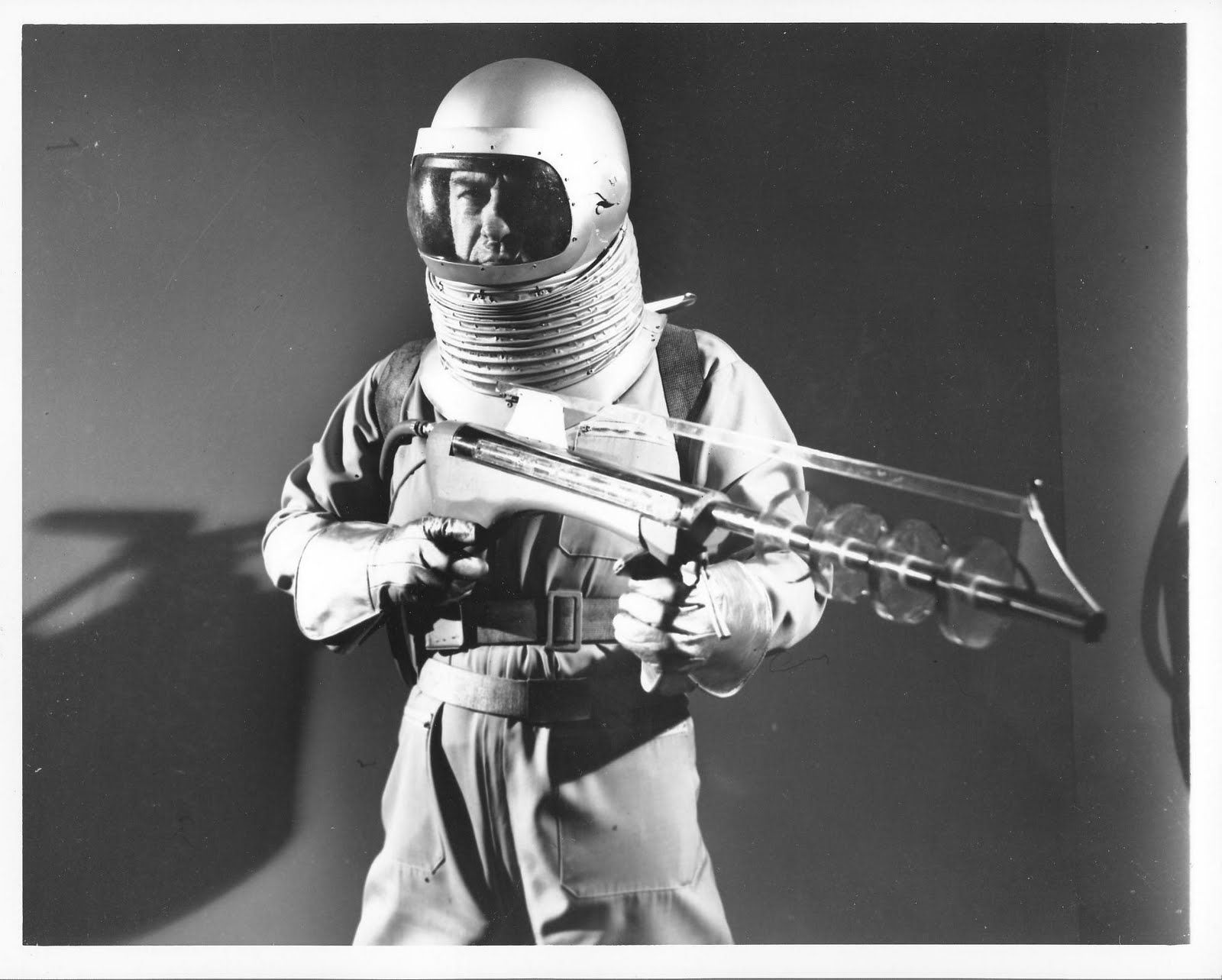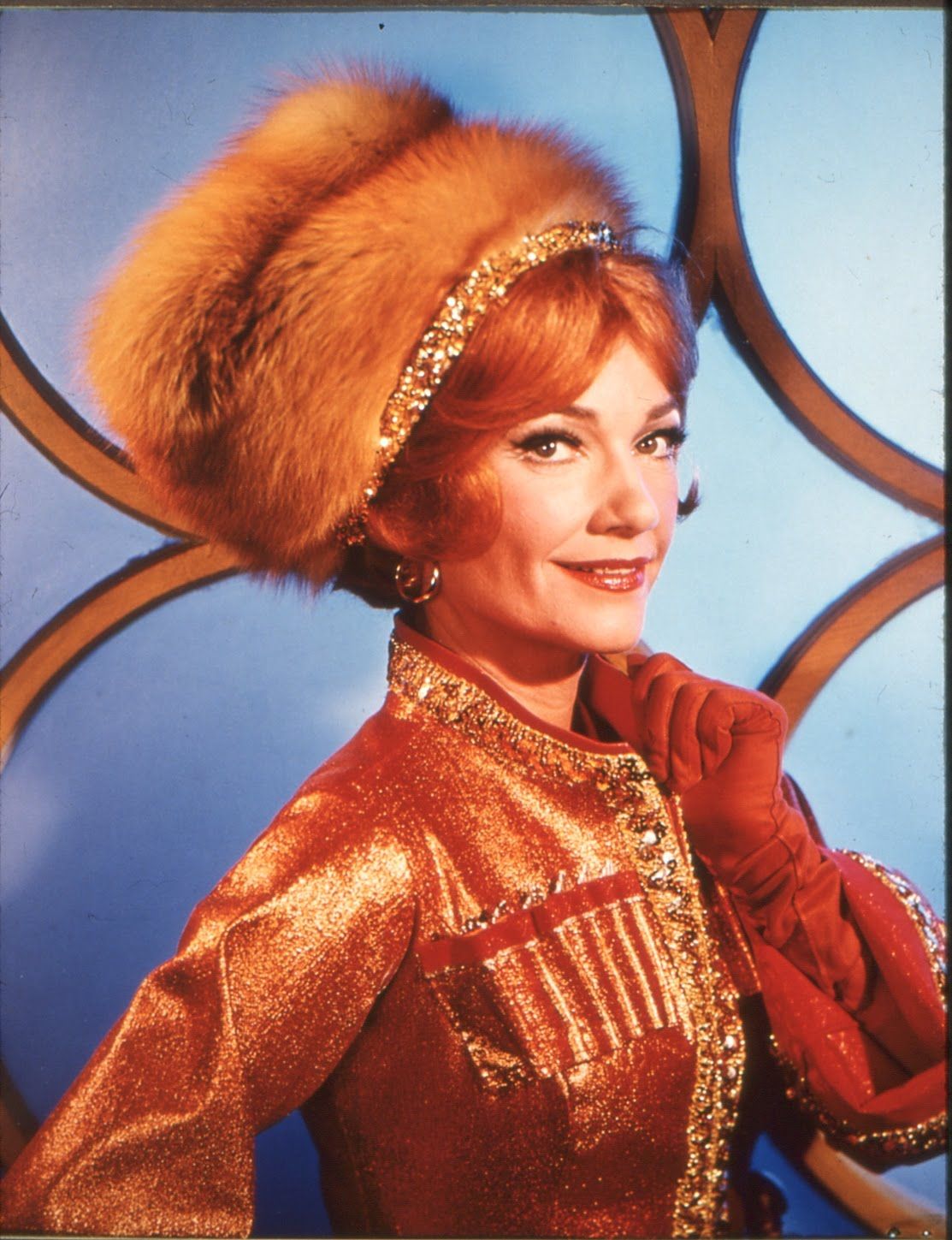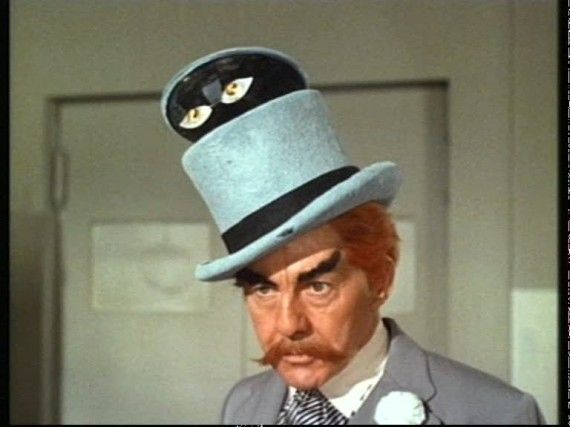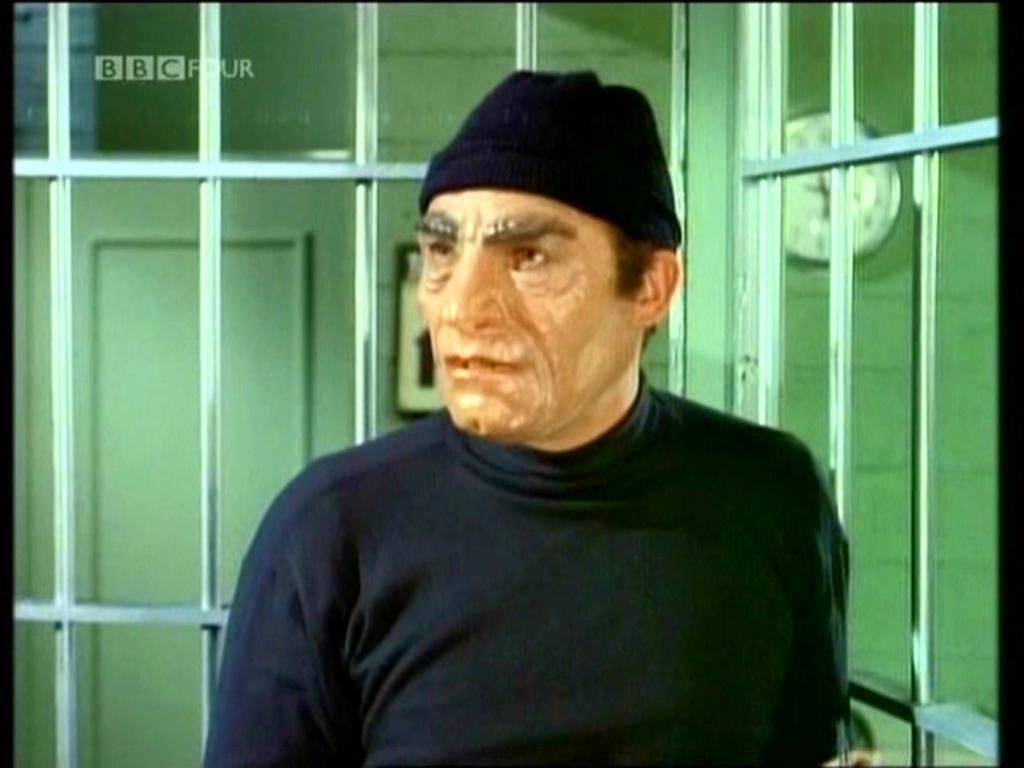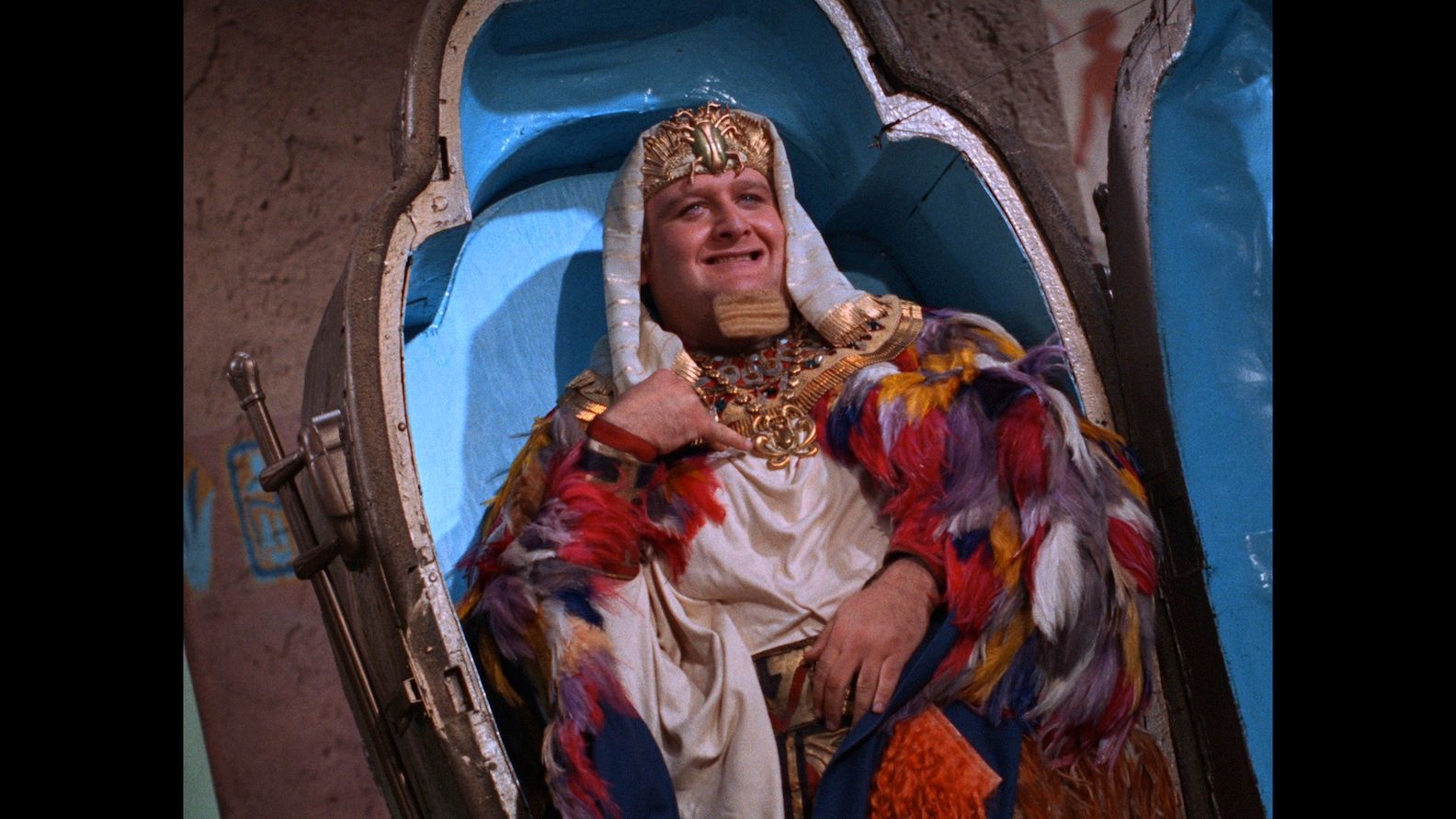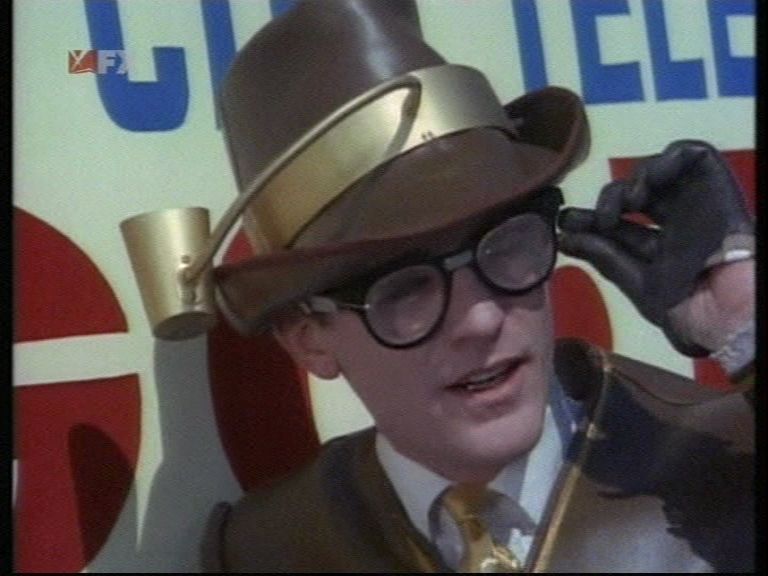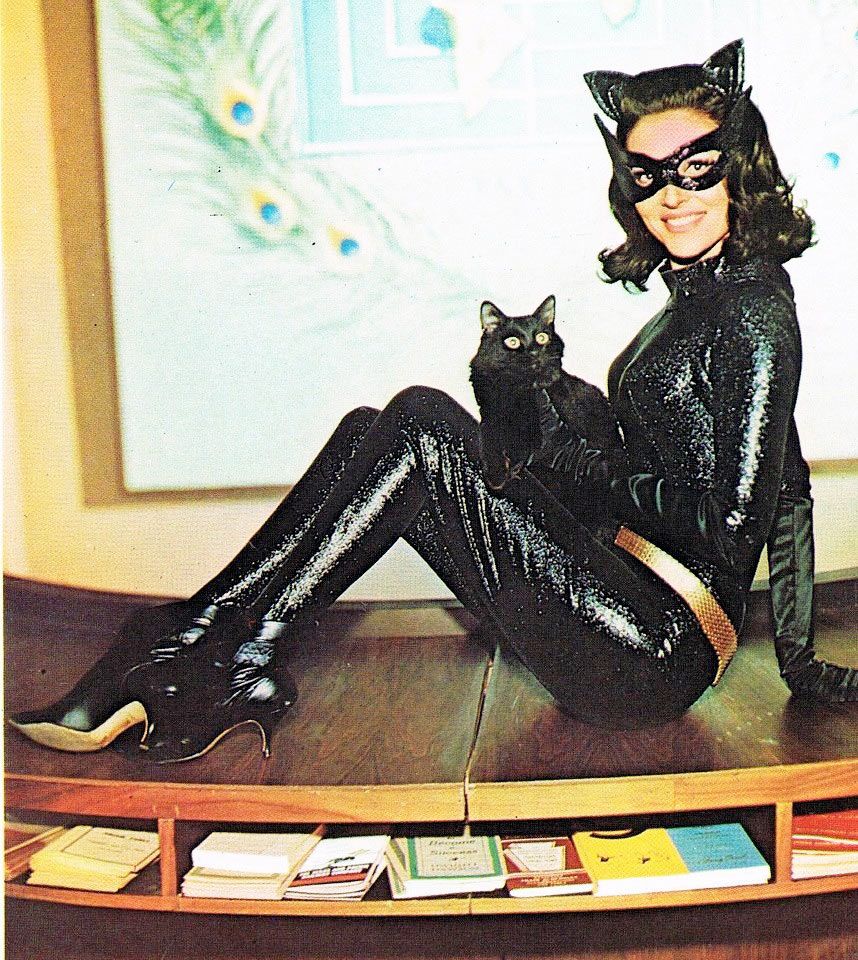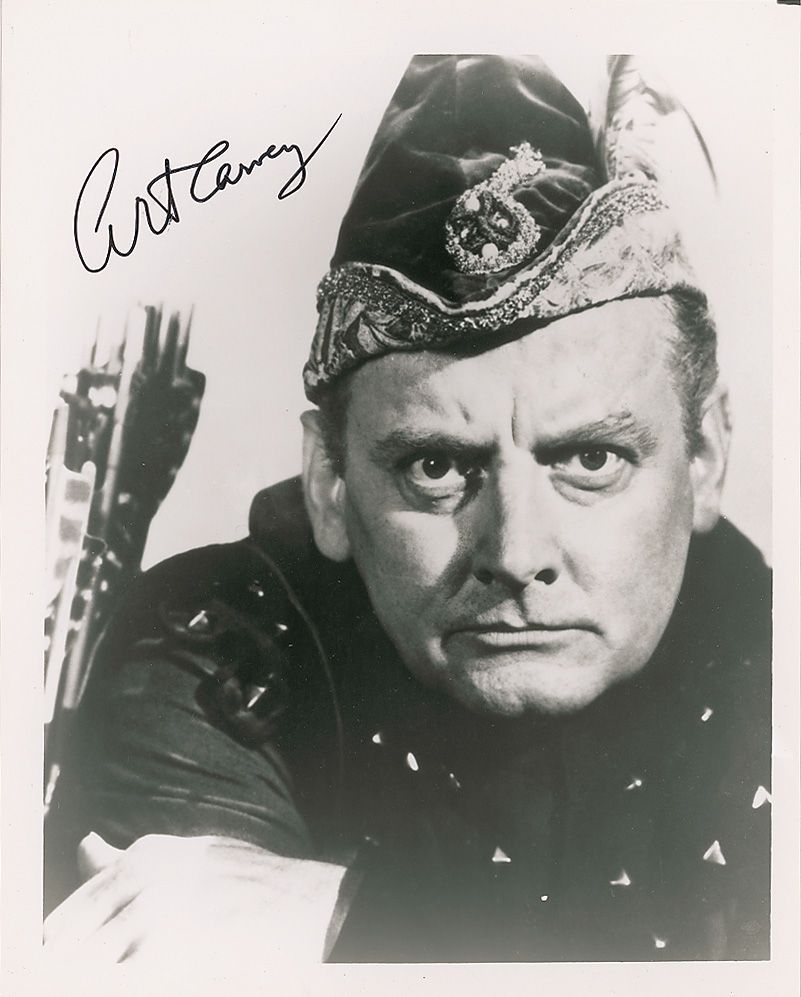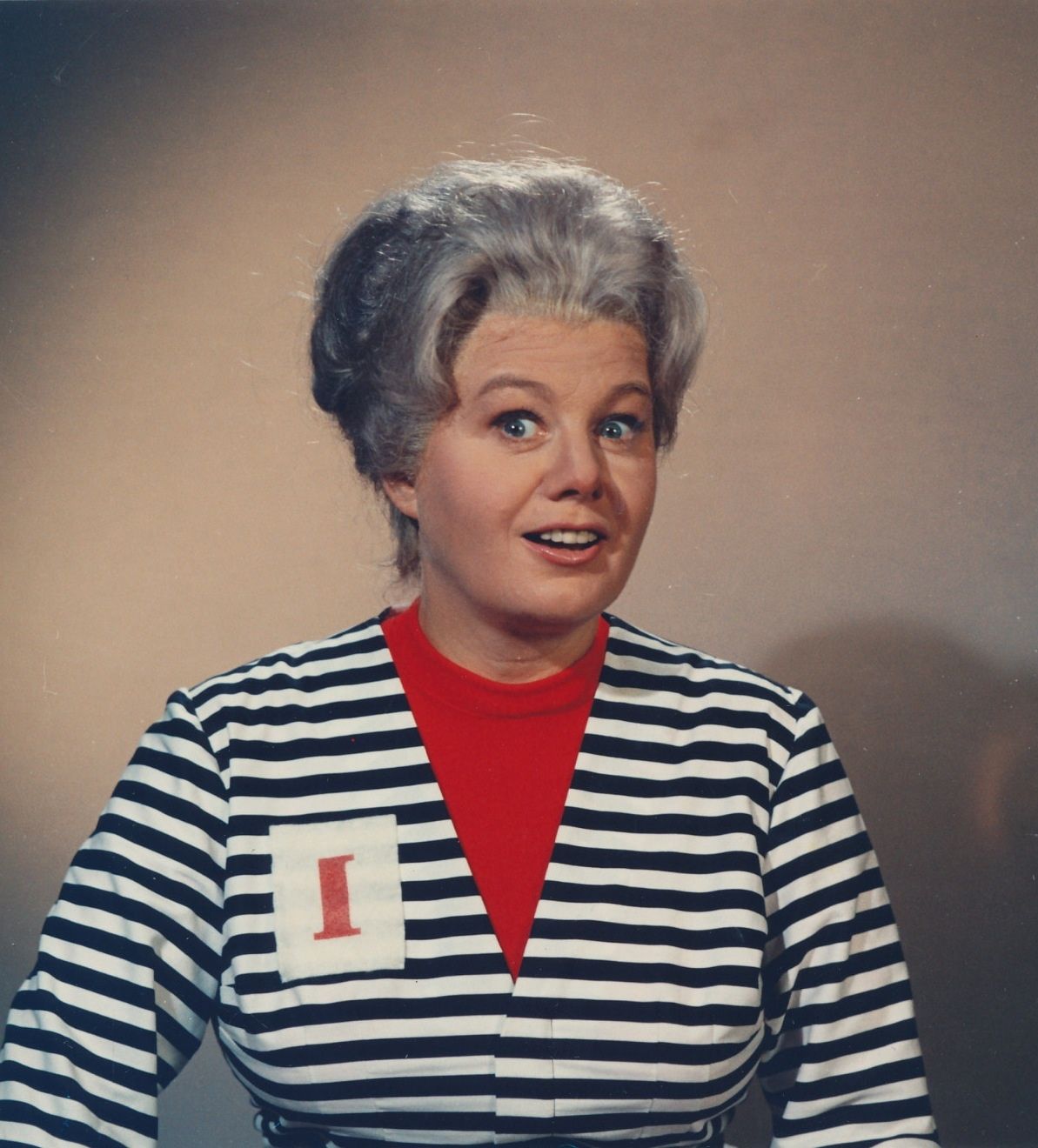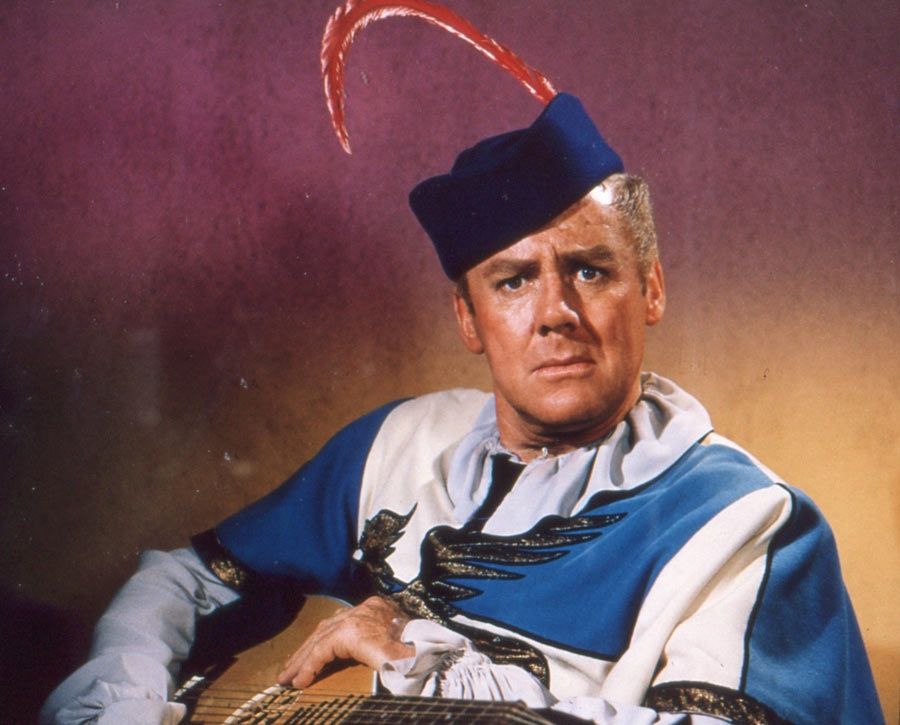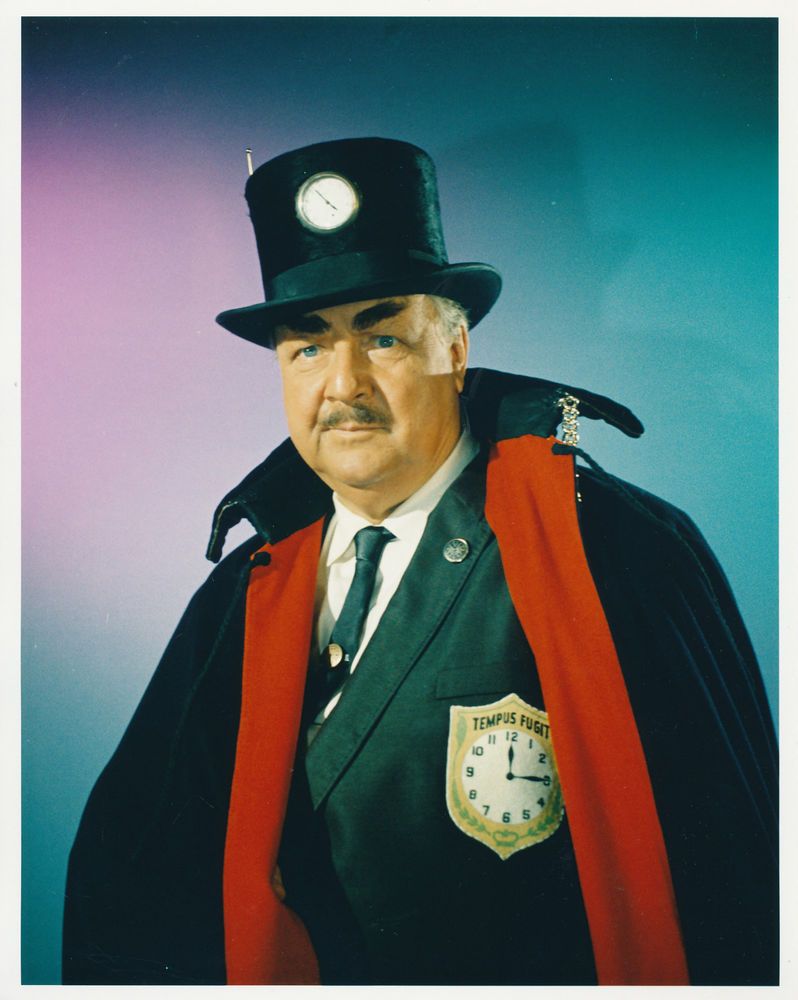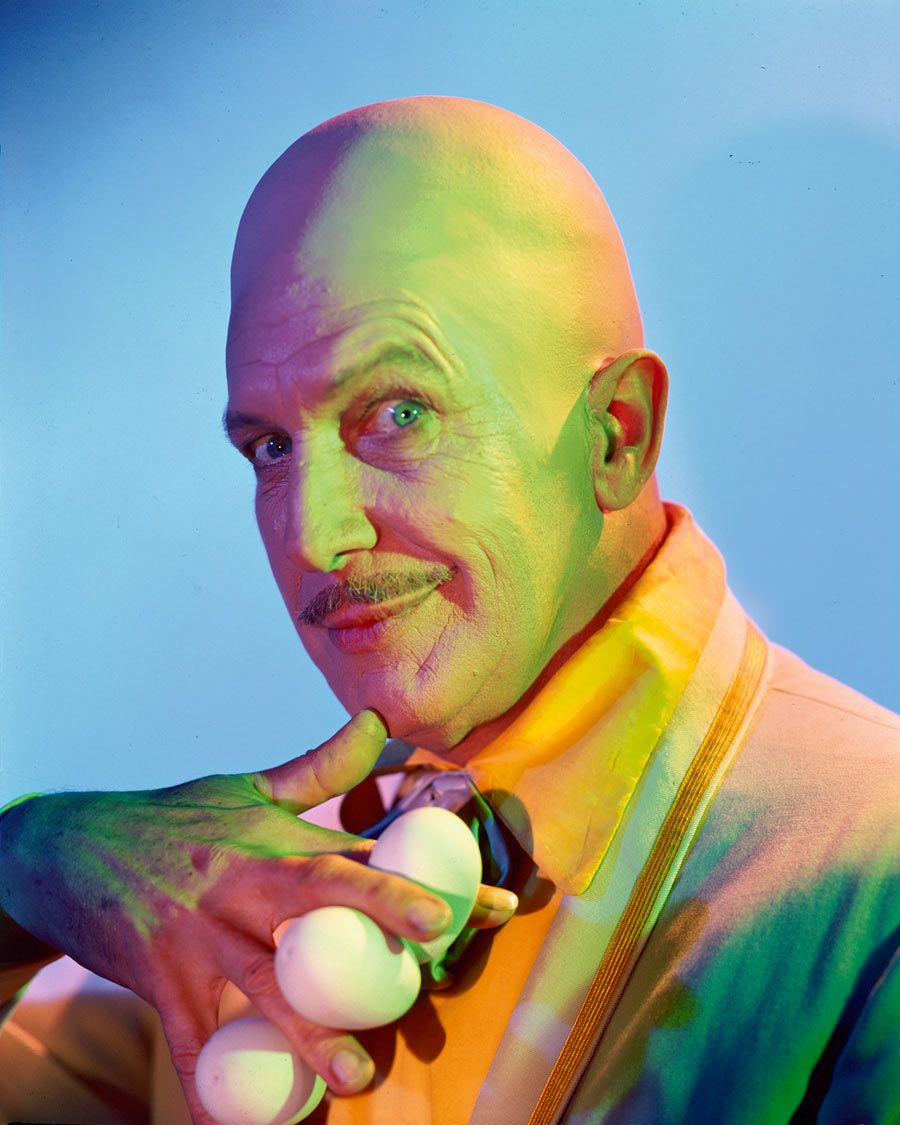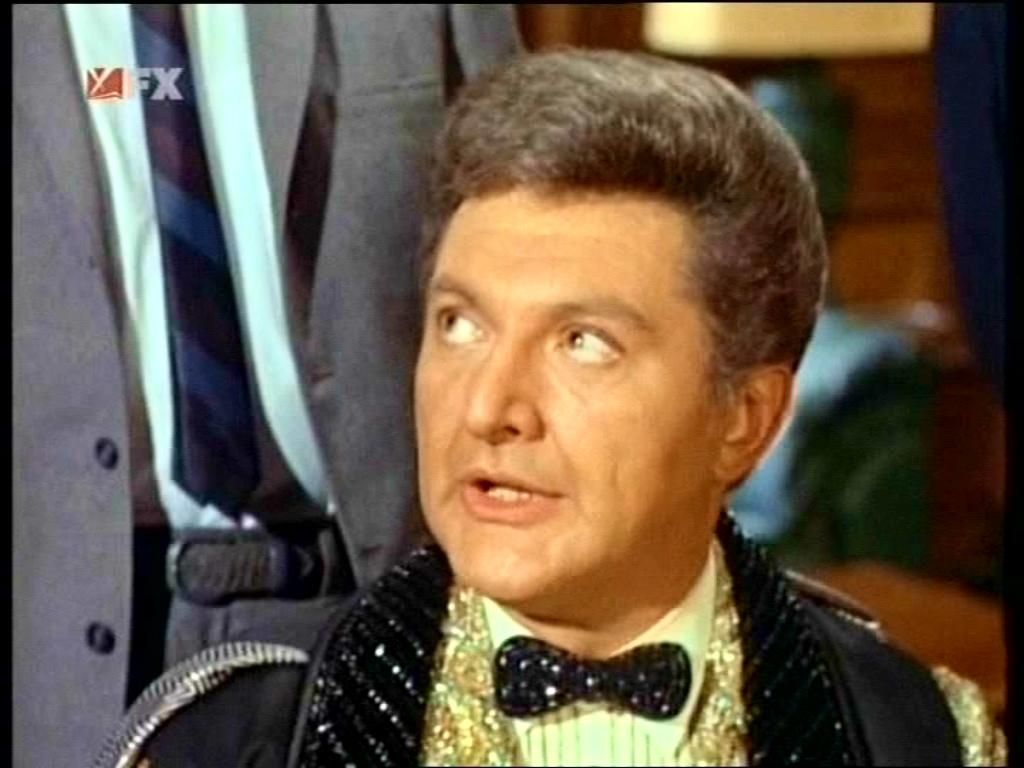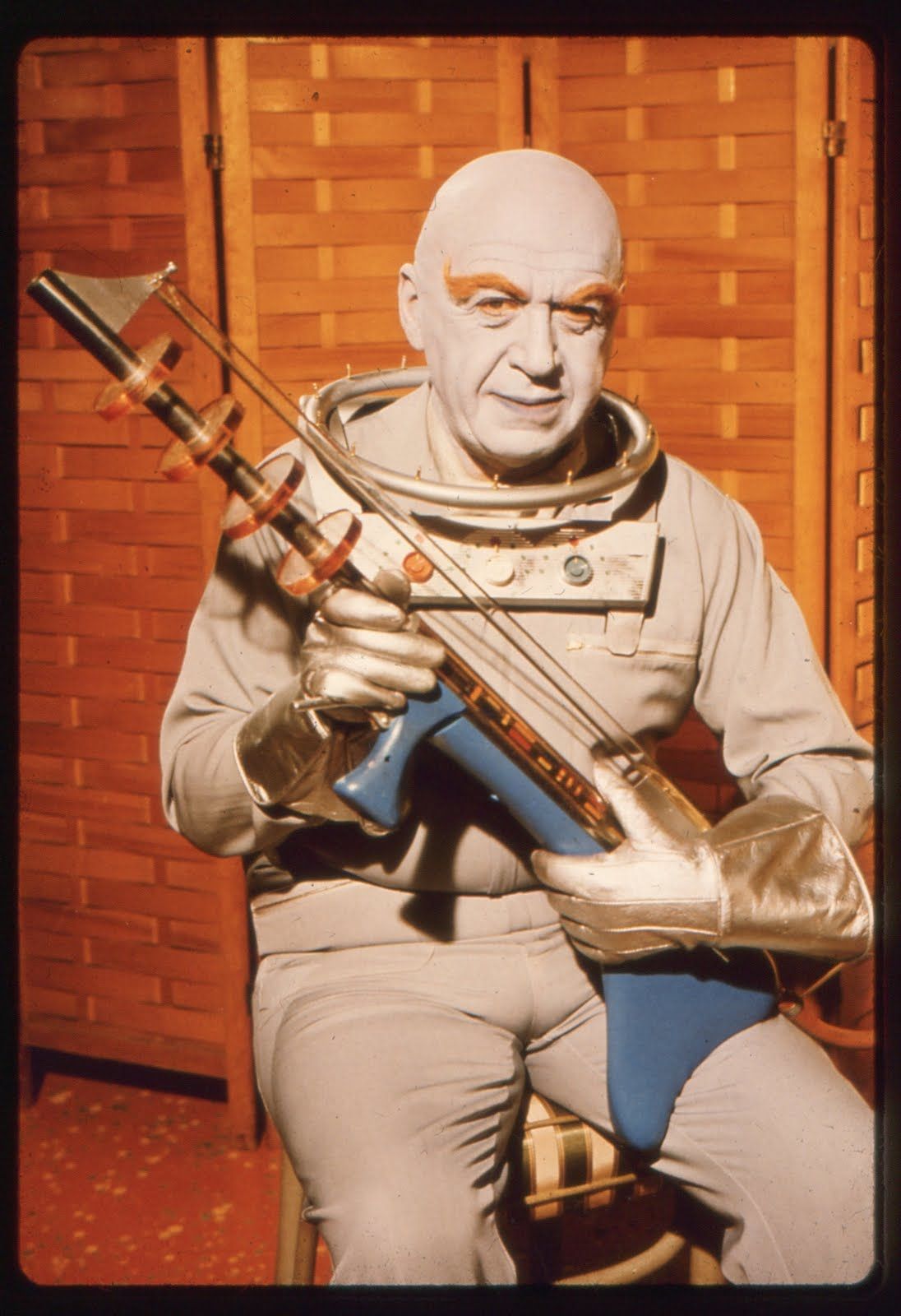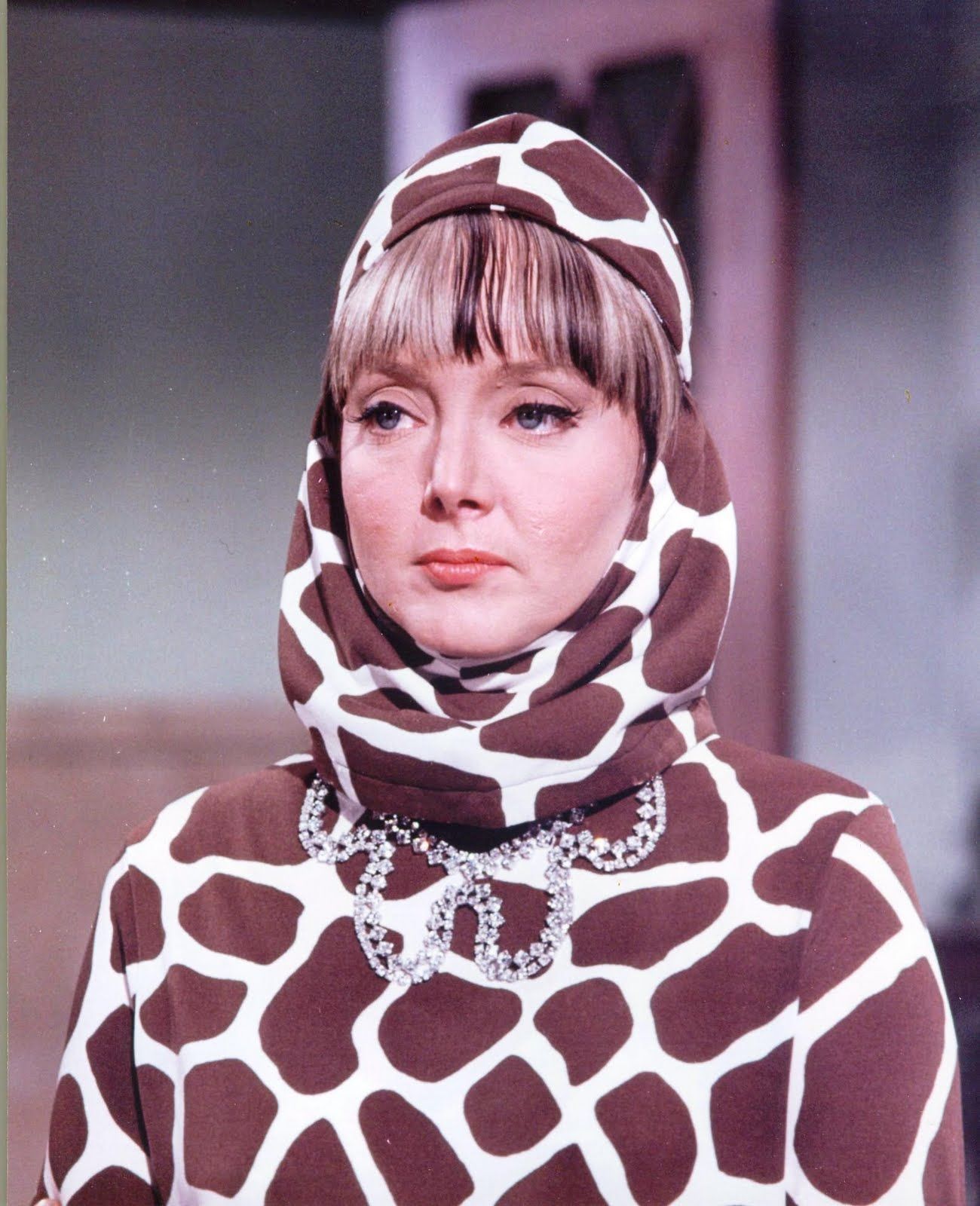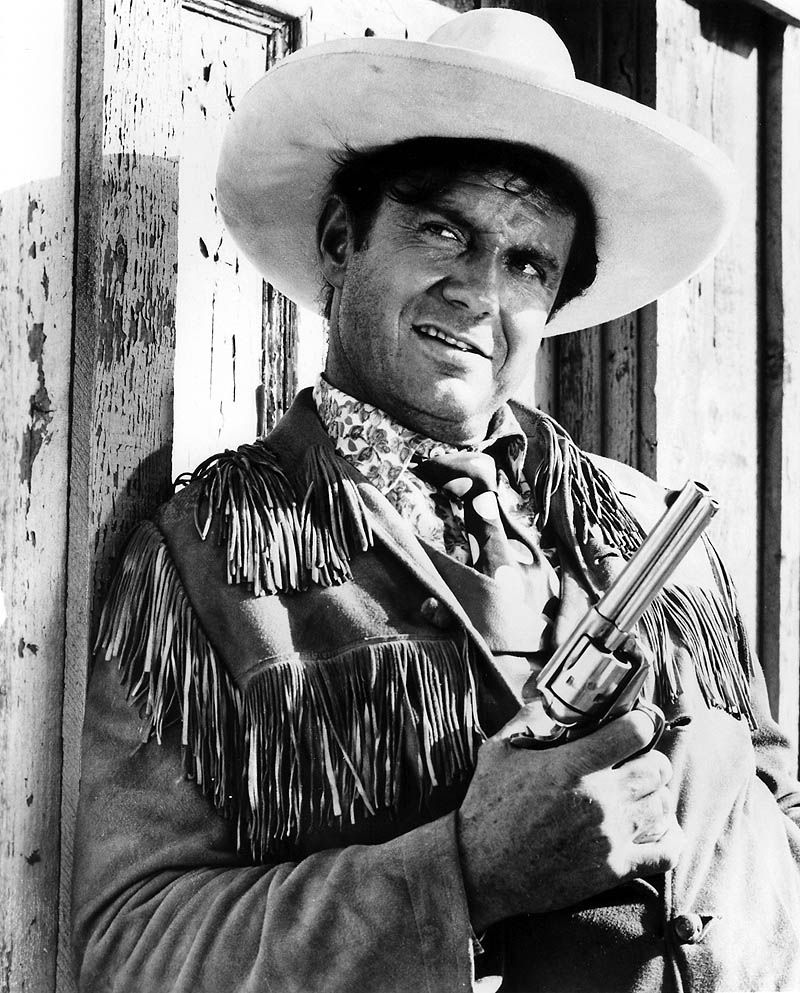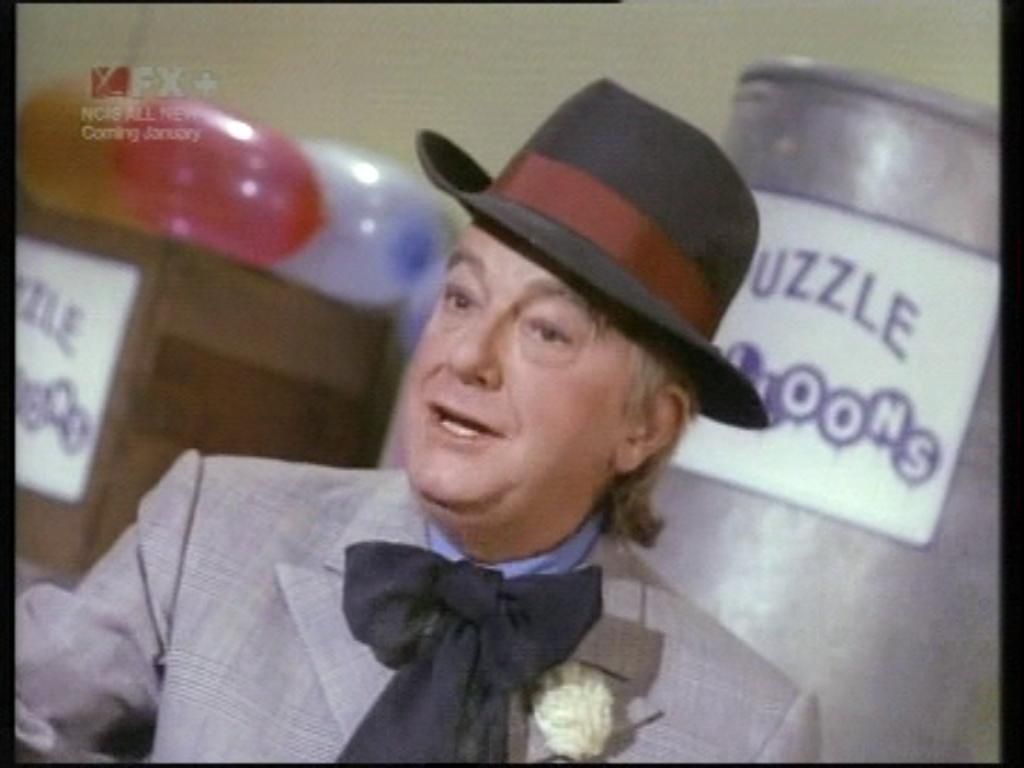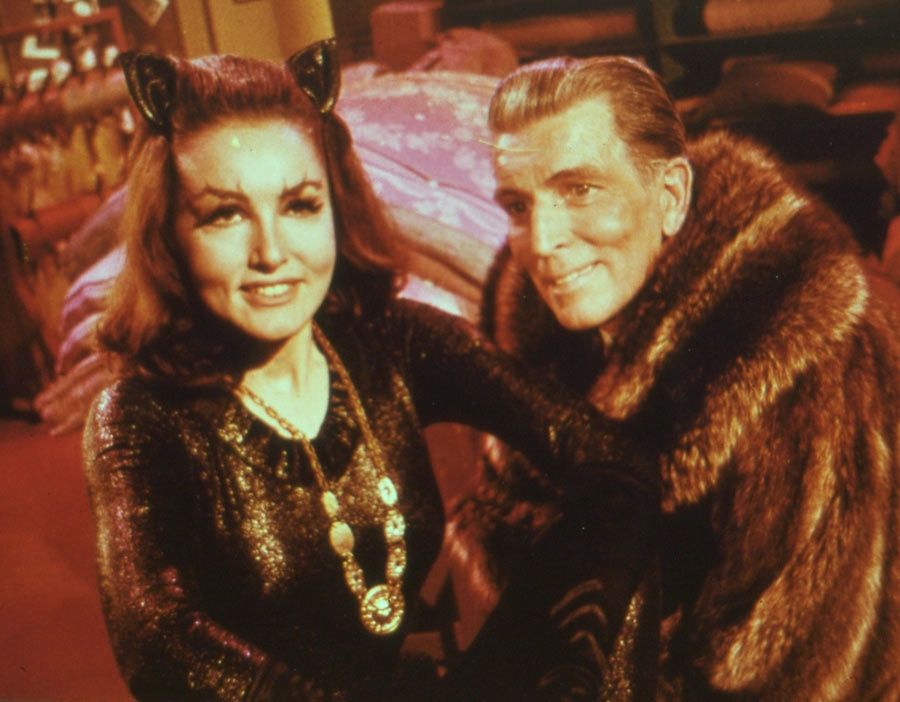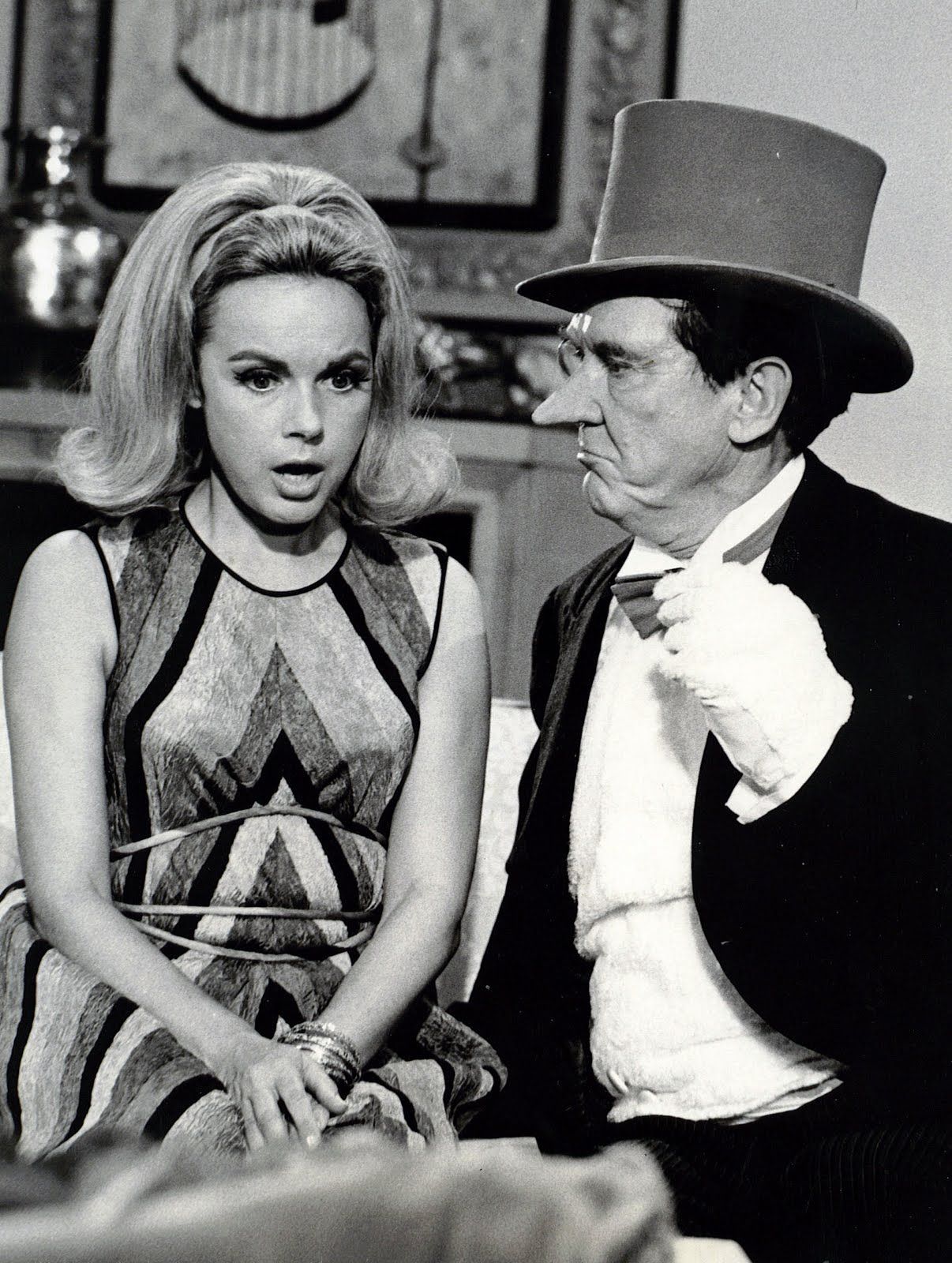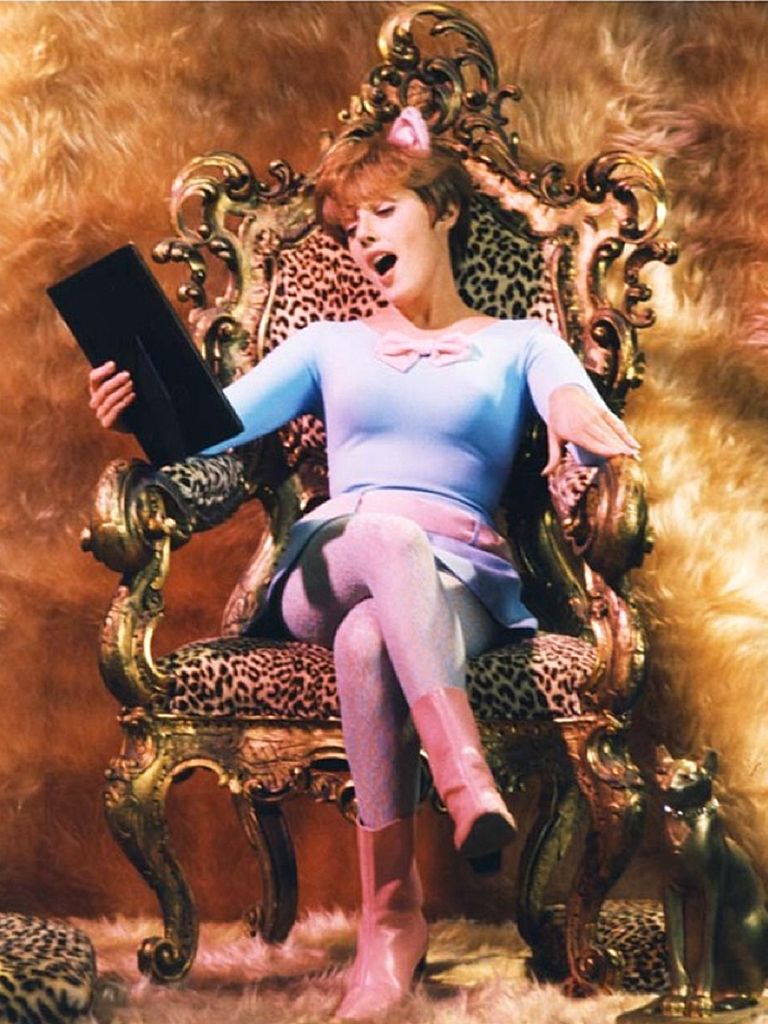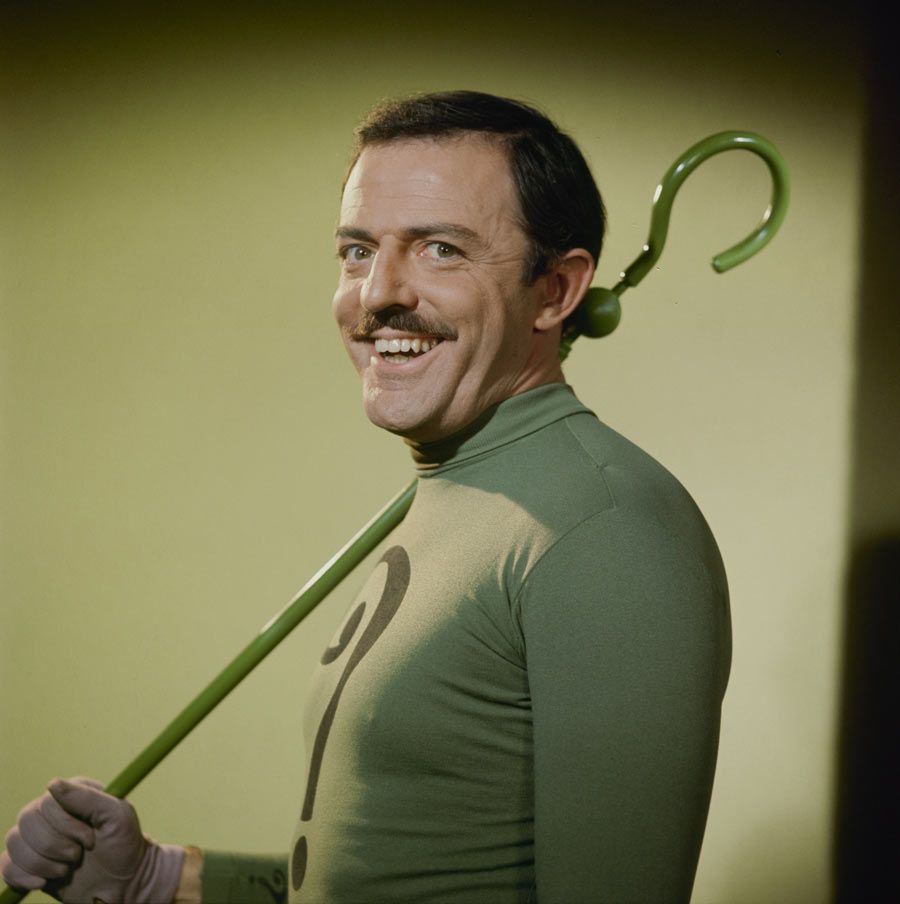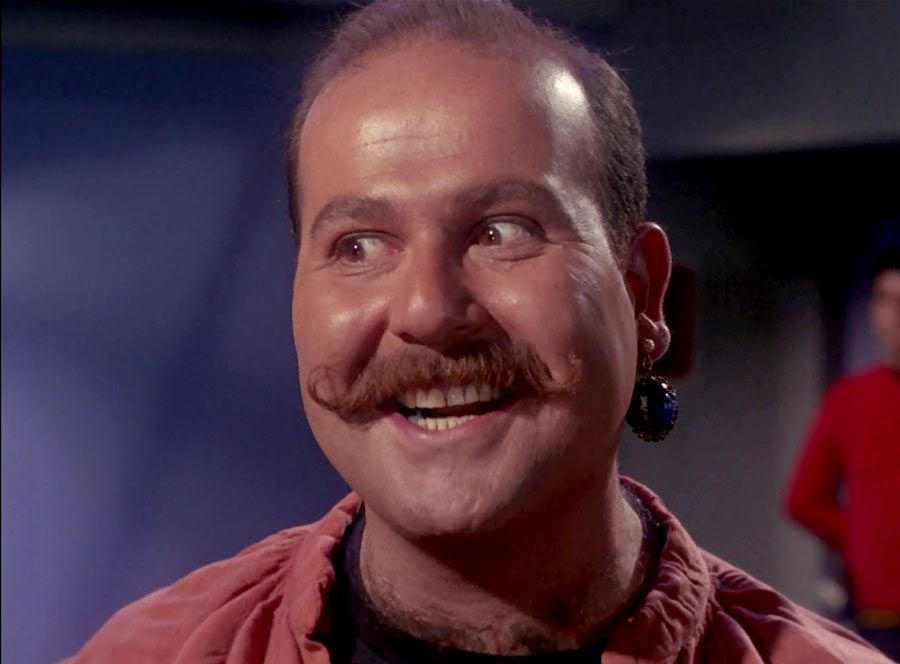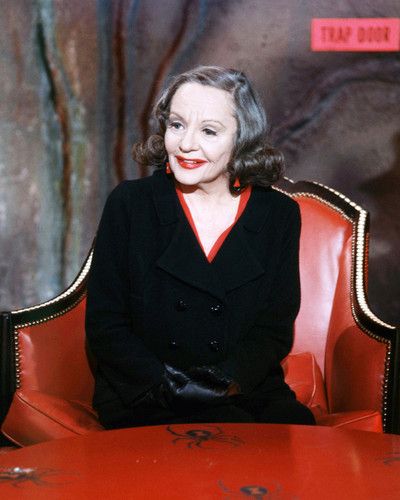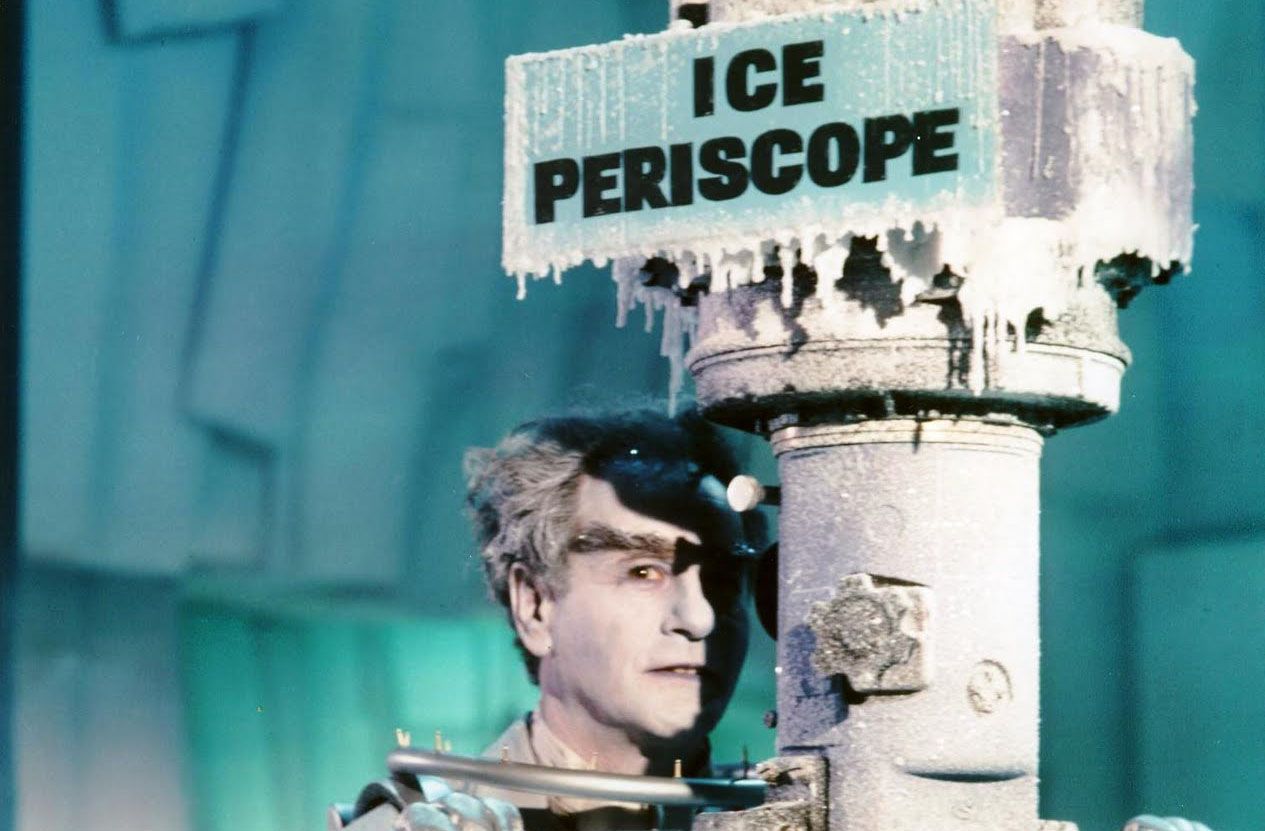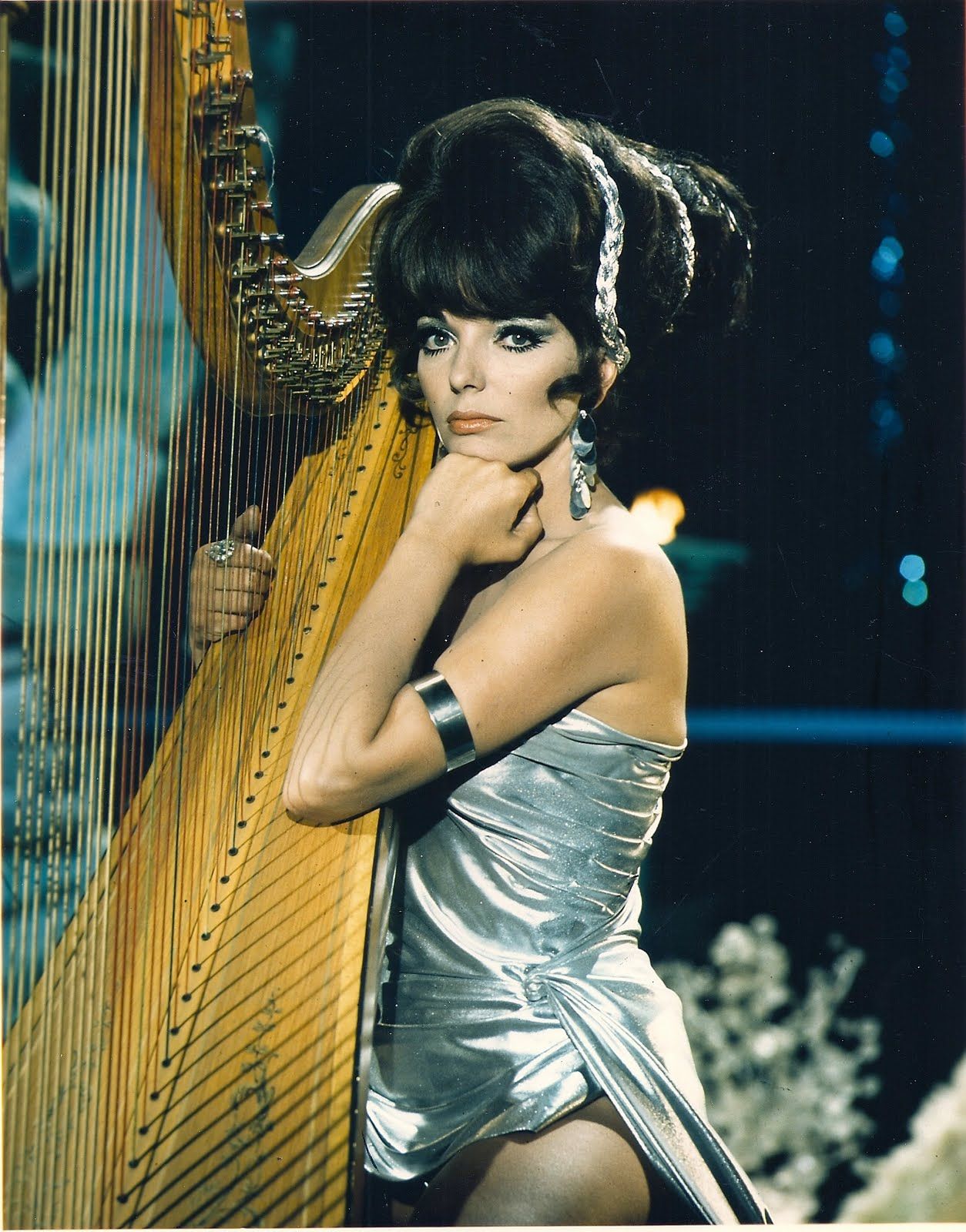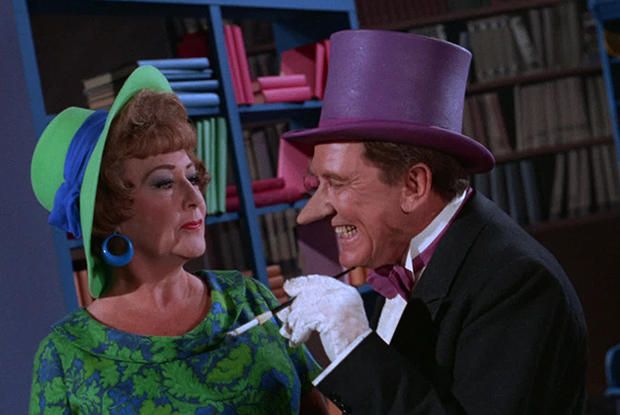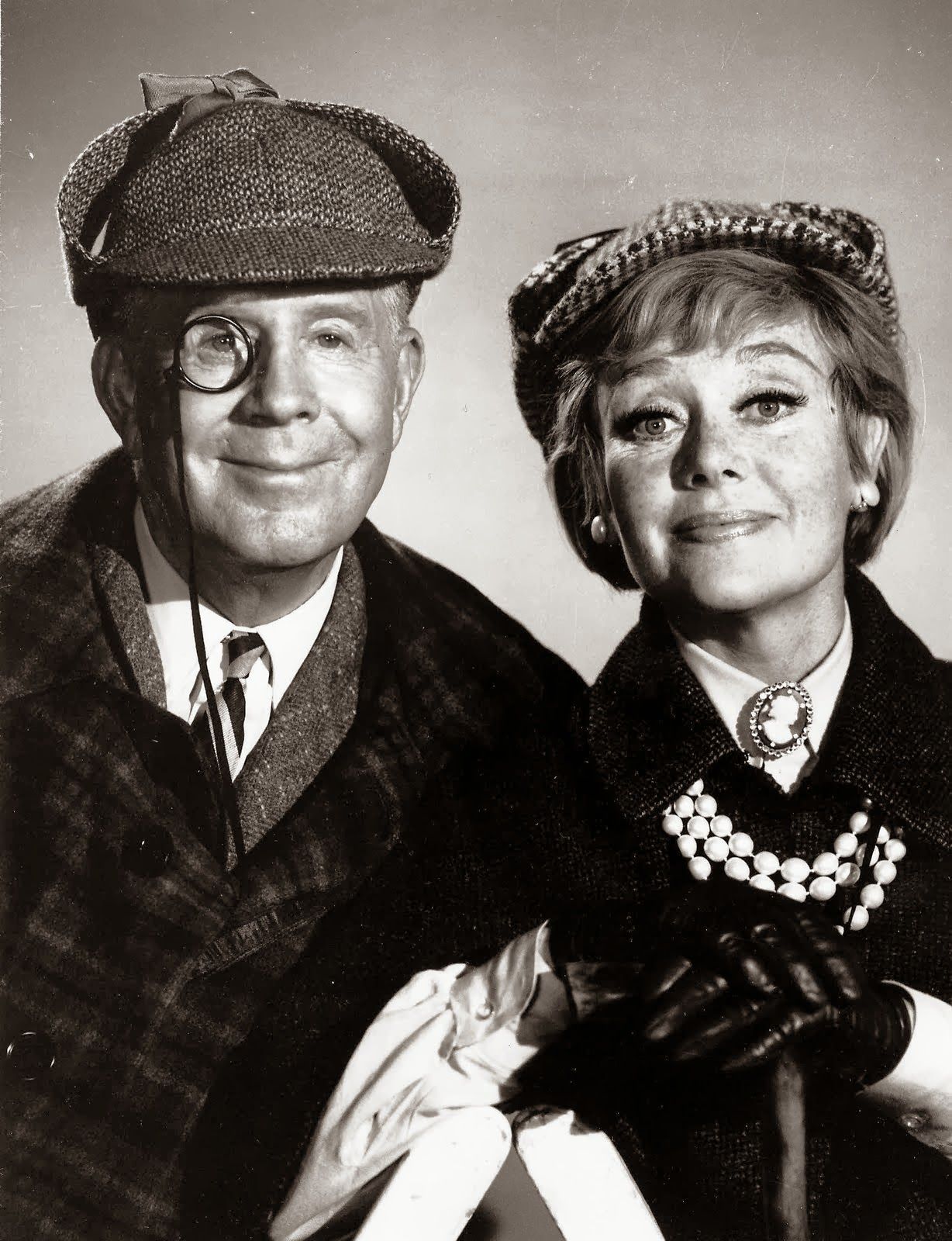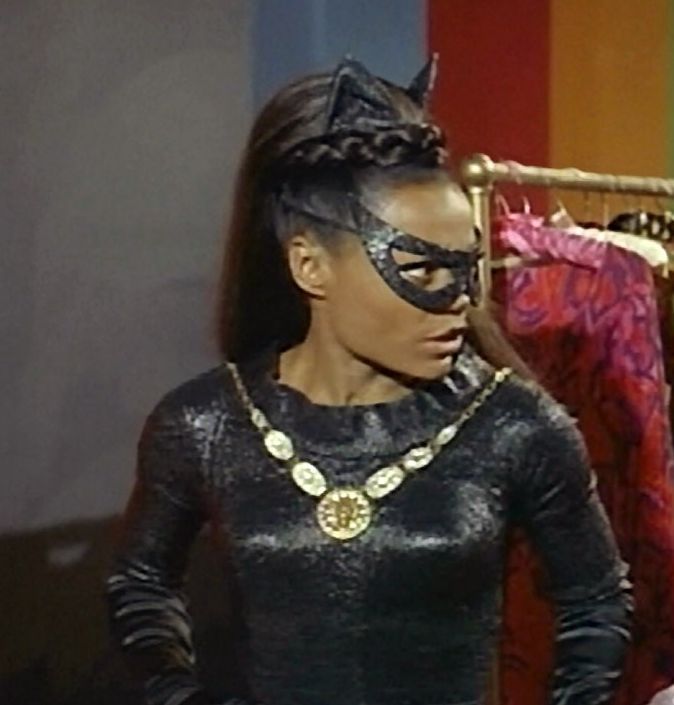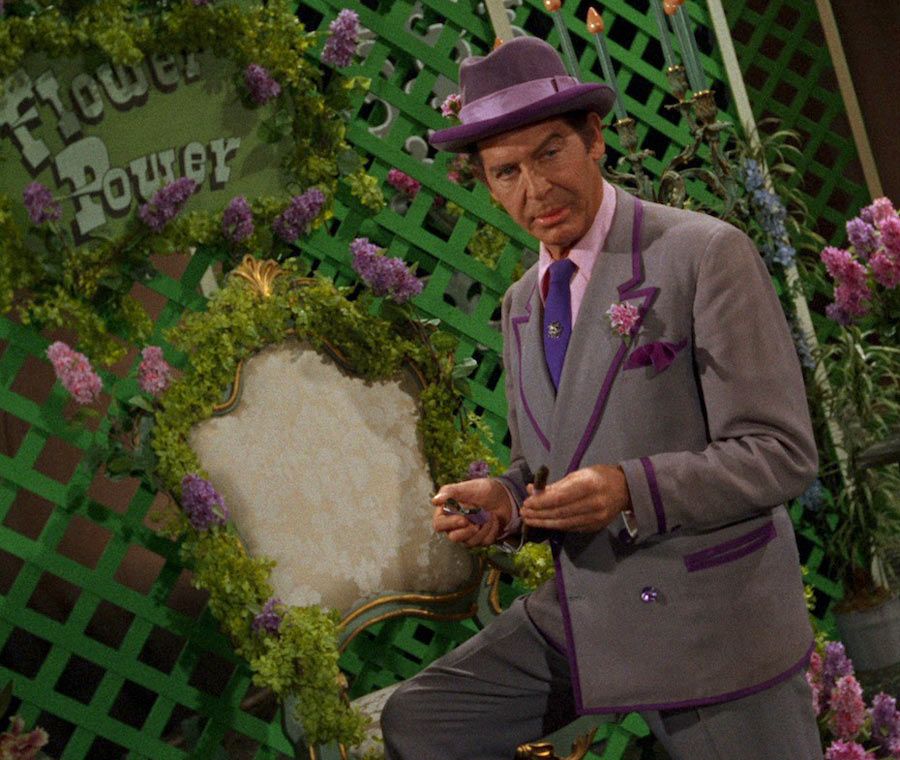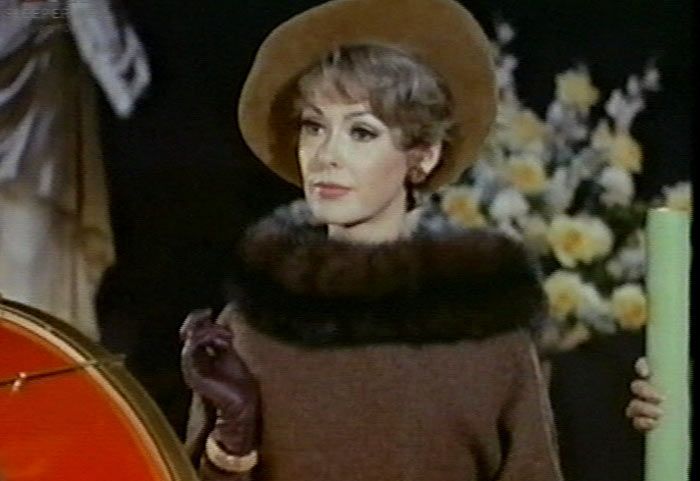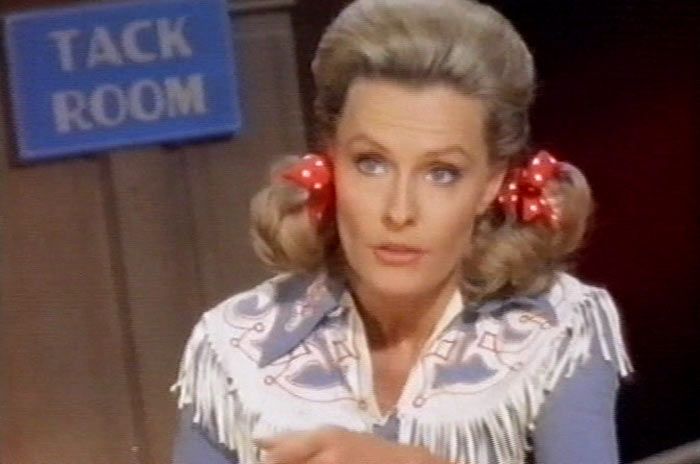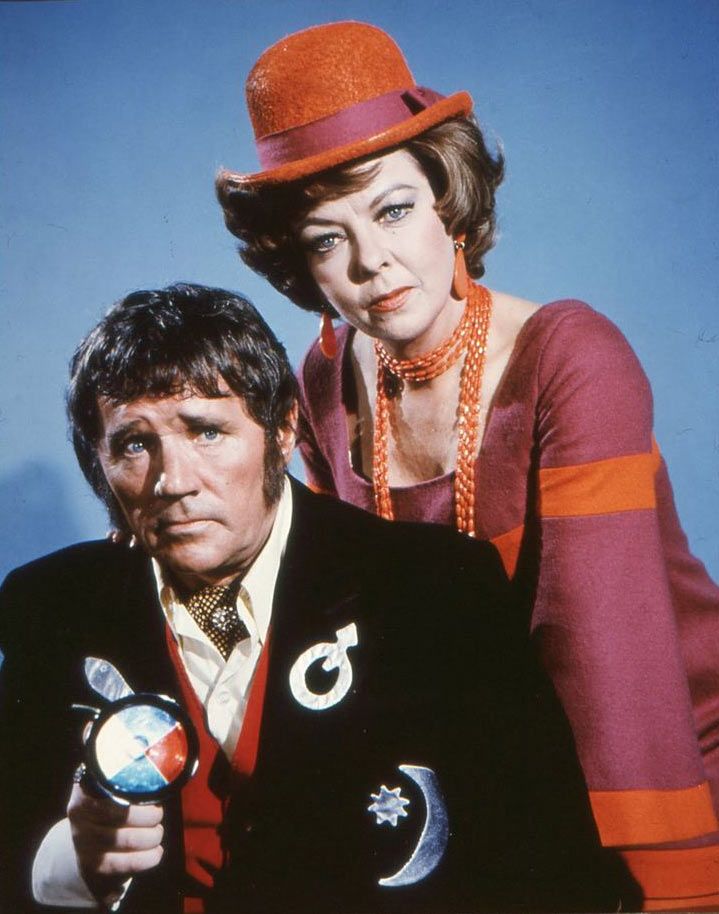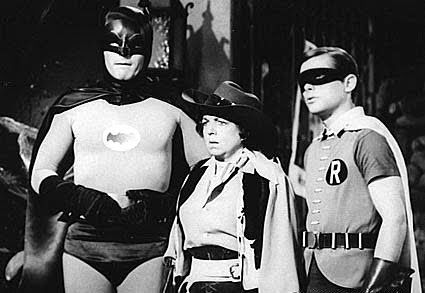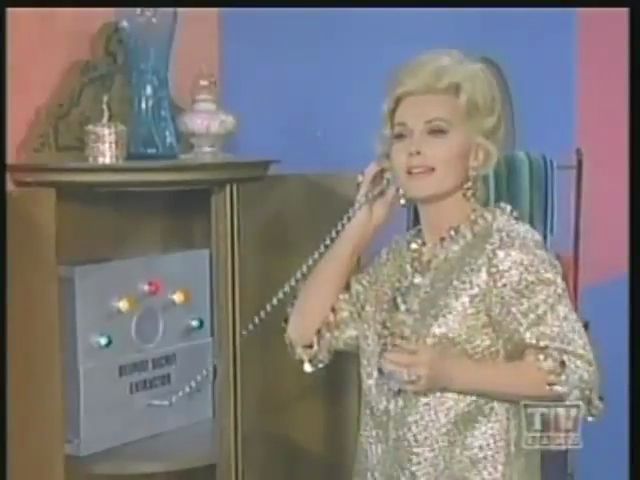Even in their characters' outrageous comic book-style costumes and makeup, the '60s-era TV audience knew exactly who the actors playing the bad guys opposite Adam West's Batman were. While many of the names are less-known to today's audience, they were among the most famous A-list performers of their time.
With the considerable exception of "The Simpsons," no other show in the history of the medium has had quite the same kind of pop cultural cachet when it came to showbiz A-listers coveting guest appearances. Indeed, even though celebrity stunt casting had certainly become de rigueur in the world of television by 1966, "Batman" evolved the practice into an art form.
"Batman" Executive Producer William Dozier made the inspired decision to stunt cast in every single episode, bringing in a new member Hollywood's finest (or two) to fill the ranks of the Caped Crusader's Rogues Gallery for each weekly two-part airing. Batman and Robin, it was decided, could be played by newcomers Adam West and Burt Ward in a manner so deliriously square they were somehow hip, but the truly colorful -- and juicy -- material would belong to the bad buys. Crucially, Dozier cast each new villain personally.
RELATED: The Ongoing Relevance of Adam West's "Batman"
Dozier was a respected Tinseltown veteran -- he'd previously headed RKO Pictures' theatrical division, CBS's West Coast operations and Screen Gems before setting up his TV production shingle -- with a celebrity spouse (actress Ann Rutherford) who'd appeared in films including "Gone With the Wind," "The Secret Life of Walter Mitty" and the "Andy Hardy" movie series. The couple was particularly popular in Hollywood's social circles, and well known for throwing terrific parties. As a result, Dozier possessed the potent combination of a keen eye for casting and personal access to the top echelons of talent in the industry.
The producer also set a high bar with his initial casting choice: The series' first villain was The Riddler, and to bring the quizzical bad guy to life, Dozier tapped one of the era's most of-the-moment performers in Frank Gorshin. Gorshin was energetic, enthusiastic and highly respected within the industry for his cutting edge nightclub act, but was still looking for a defining showbiz moment. He rose to the occasion and created a hip, memorable and very funny threat, earning an Emmy nomination for his efforts. When "Batman" became an overnight sensation-turned-full-blown-phenomenon, its campy, pop-art sensibility appealing to kids and parents, hippies and the highbrow, the Hollywood elite soon came knocking on Dozier's door.
"It was easy to get [them]," Dozier would later say. "They all recognized that it was a very different thing for them to do. It was a show that was very popular and they would have a very big audience, and no actor can turn that down."
CBR TV: Adam West on "Batman's" Resurgent Popularity, His Unique Voice
Indeed, many top movie stars who would otherwise not consider television work were downright desperate to get on the show, if only to impress the audience they had at home: their kids, who they often hoped they could bring to the set. As a result of the high demand, Dozier could pay the industry's top-billed players a standard rate of $2,500. Huge names like Frank Sinatra, Natalie Wood and Cary Grant reportedly lobbied for roles, but the right villainous fits never emerged; others were accommodated with the show's famed "window cameos" -- the likes of Jerry Lewis, Sammy Davis, Jr., Mickey Rooney and even "The Addams Family's" Lurch would pop their heads out a window for some quick repartee as the Dynamic Duo calmly scaled a building via Bat-Rope.
At the time, every face that menaced Batman and Robin was well-known to the viewing public. Today, nearly five decades since the series' three-season run, some of them -- like primary baddies Gorshin, Julie Newmar, Cesar Romero and Burgess Meredith -- remain iconic because they were on "Batman," a few went on to further career glories and a handful became even more famous than they were at the Bat-Time, but many have become largely unfamiliar to a large portion today's audiences.
Now that the complete series is at last available on home video and new generations of admirers are poised to discover "Batman" and its unique place as a crossroads for some of the finest talent across multiple Hollywood eras, Comic Book Resources offers a Who's Who look at the Bat-Villains and their superstar bona fides, whether you're discovering someone for the first time, remembering a timeless talent or wondering just why a certain actor looks so darn familiar.
Frank Gorshin
Bat-Baddie: The Riddler
Before Batman: Along with a burgeoning career as a film and TV actor, Gorshin was one of the most popular nightclub comedians of the time, due in large part to his hilarious impressions of top Hollywood stars like Kirk Douglas and Marlon Brando. He appeared on "The Ed Sullivan Show" a dozen times, performing on the show the same night The Beatles made their U.S. debut.
After Batman: Gorshin's lengthy career included playing a literally half-black, half-white alien in the memorable "Let That Be Your Last Battlefield" episode of the original "Star Trek," appearing in Terry Gilliam's sci-fi film "Twelve Monkeys," and playing himself in a Quentin Tarantino-directed episode of "CSI."
Cesar Romero
Bat-Baddie: The Joker
Before Batman: One of the screen's leading "Latin lovers" during Hollywood's golden era, Romero played everything from O. Henry's Western hero the Cisco Kid to dance partners for musical stars Carmen Miranda and Betty Grable to heavies menacing the likes of Nick and Nora Charles in "The Thin Man" and the Rat Pack in "Ocean's Eleven."
After Batman: Along with playing the villainous foil to Kurt Russell's collegiate genius in Disney's "The Computer Wore Tennis Shoes" and its sequels, Romero worked well into his 80s, with recurring and guest roles on some of the most popular TV series of their day, including "The Love Boat," "Fantasy Island," "Falcon Crest," "Magnum, P.I.," "Chico and the Man" and "The Golden Girls."
Burgess Meredith
Bat-Baddie: The Penguin
Before Batman: After his distinguished early stage and films career was disrupted by the Hollywood blacklist, Meredith mounted a major comeback in television, most notably with his star turn in the iconic "Twilight Zone" episode "Time Enough to Last" as the bookish last man on earth.
After Batman: Meredith went on to be Oscar-nominated for his role in "Rocky" as Rocky Balboa's irascible boxing trainer Mickey Goldmill, as well as memorable turns in films like "Clash of the Titans" and "Grumpy Old Men."
Julie Newmar
Bat-Baddie: Catwoman
Before Batman: Newmar made her mark as a statuesque dancer in splashy screen musicals like "Seven Brides for Seven Brothers," on Broadway as sexy Stupefyin' Jones in the stage adaptation of Al Capp's comic strip "Lil' Abner," and in the short lived sitcom "My Living Doll" as gorgeous robot.
After Batman: Along with successful entrepreneurial sidelines designing pantyhose and investing in real estate, Newmar remained busy, appearing in everything from "Star Trek" and "Buck Rogers In the 25th Century" to George Michael's "Too Funky" video and the classic drag queen film she inspired, "To Wong Fu, Thanks For Everything! Julie Newmar."
George Sanders
Bat-Baddie: Mr. Freeze
Before Batman: For decades, Sanders served as Hollywood's go-to as the ultimate in aloof European sophistication, whether heroic (playing the pulp adventurer The Falcon or the Robin Hood-esque thief The Saint) or villainous (as the cruel cousin/lover in Alfred Hitchcock's "Rebecca" or his Oscar-winning stint as the sneering drama critic Addison DeWitt in "All About Eve").
After Batman: Sanders -- who married two of the three Gabor sisters -- saw a final major triumph drolly voicing Shere Khan, the villainous tiger in Disney's "The Jungle Book," shortly before committing suicide with a notorious note that read in part "Dear World, I am leaving because I am bored."
Anne Baxter
Bat-Baddie: Zelda the Great (Season One); Olga, Queen of the Cossacks (Season Three)
Before Batman: The granddaughter of renowned architect Frank Lloyd Wright, Baxter was only 23 when she won a Best Supporting Actress Oscar for her role in "The Razor's Edge," was again nominated for playing scheming understudy Eve Harrington in the masterful inside-showbiz classic "All About Eve," and essayed a sultry Egyptian princess in the Biblical epic "The Ten Commandments."
After Batman: Amid numerous TV guest spots, miniseries and talk show stints, Baxter frequently playfully referenced her "All About Eve" legacy, taking on the role of theater diva Margo Channing in the stage production and stepping into the series "Hotel" to fill the void left by her ailing friend Bette Davis.
David Wayne
Bat-Baddie: The Mad Hatter
Before Batman: After a Tony-winning stage career, in film Wayne specialized in playing charming cads and guys who lose the girl in romantic comedies -- as well as appearing opposite Marilyn Monroe in more movies than any other actor -- before becoming one of the top dramatic stars of television's golden era.
After Batman: Wayne returned to the stage (including a stint in "It's a Bird...It's a Plane...It's Superman") and remained a strategically deployed TV guest actor (as in a notable episode of "Gunsmoke"), supporting player (the primetime soap "Dallas") and star (the hospital sitcom "House Calls").
Malachi Throne
Bat-Baddie: False Face
Before Batman: A favorite of producer Irwin Allen, the basso-voiced Throne counted the Allen-helmed "Voyage to the Bottom of the Sea," "The Time Tunnel" and "Lost In Space" among the many iconic '60s series he appeared on -- including a turn on the 1964 pilot for "Star Trek" as the voice of The Keeper.
After Batman: Over the course of his career, Throne enjoyed a long-running connection to the "Star Trek" franchise, appearing again on the original series, "The Next Generation" and "Voyager," as well as voicing characters on various Batman animated series.
Victor Buono
Bat-Baddie: King Tut
Before Batman: A wunderkind who excelled at both Shakespearean and modern stage roles in his teens, Buono's film resume includes his Oscar-nominated stint in "What Ever Happened to Baby Jane" opposite Bette Davis, along with her follow-up,"Hush...Hush, Sweet Charlotte." He was a favorite foil for Rat Packers Frank Sinatra, Sammy Davis, Jr. and Dean Martin in several of their films, as well as "The Wild, Wild West's" diabolical Count Manzeppi.
After Batman: A slew of TV work followed -- including a memorable stint as the wealthy, stuffy father of "Taxi's" Rev. Jim -- as well as comedy albums and books built around his humorous poetry, which made him a favored guest on Johnny Carson's "Tonight Show" before his death from a heart attack at age 43.
Roddy McDowall
Bat-Baddie: The Bookworm
Before Batman: After breakthrough roles as a child actor -- in John Ford's "How Green Was My Valley" and "Lassie Come Home," opposite lifelong friend Elizabeth Taylor, McDowall eventually took a hiatus from Hollywood to further hone his craft on the Broadway stage, including playing Modred in the original production of "Camelot" opposite Julie Andrews and Richard Burton.
After Batman: His passion for photography made him a favorite among Hollywood's social set, snapping candid shots of his showbiz friends, and he found further big-screen immortality playing a variety of central roles in ape makeup throughout "The Planet of the Apes" films and TV series.
Lee Meriwether
Bat-Baddie: Catwoman (#2, from the 1966 "Batman" theatrical film)
Before Batman: Building on her victory in the Miss America beauty pageant in 1955, Meriweather scored an on-air stint on "The Today Show" and launched an acting career guest starring on dozens of '60 TV series.
After Batman: Film roles and a recurring stint on "Mission: Impossible" led Meriweather into her Emmy- and Golden Globe-nominated role as the secretary and daughter-in-law of Buddy Ebsen's TV P.I. "Barnaby Jones." After a 25-year on/off stint on the soap "All My Children," she continues to work steadily, guesting on series like "Desperate Housewives" and "Hawaii Five-0."
Art Carney
Bat-Baddie: The Archer
Before Batman: A stint on Jackie Gleason's comedy/variety series "Cavalcade of Stars" led Carney to take on the role of sewer worker Ed Norton, Ralph Kramden's best friend and neighbor, in a series of sketches that would evolve into standard-setting sitcom "The Honeymooners," making him one of the most popular stars of early television and a six-time Emmy winner.
After Batman: In 1974, Carney won a Best Actor for his performance as an elderly man road-tripping with his pet cat in "Harry and Tonto," leading to several more high-profile film roles and, in 1978, a stint on the less-revered, oft-bootlegged "Star Wars Holiday Special."
Shelley Winters
Bat-Baddie: Ma Parker
Before Batman: Initially cultivated as a studio sexpot, Winters doffed her glamorous image for "A Place In the Sun," playing the lower-class girlfriend who weighs down ambitious Montgomery Clift. She earned an Oscar for the role, followed by a second trophy for "The Diary of Anne Frank" and additional acclaim for her turn in Stanley Kubrick's "Lolita." Her talent was rivaled only by her outspoken nature and tempestuous love life.
After Batman: Winters continued to add future classics and cult favorites to her filmography -- including roles in "Alfie," "Harper," "Wild In the Streets," "The Poseidon Adventure" and "Cleopatra Jones" -- and frequent forays into television, including playing Roseanne Barr's grandmother on "Roseanne."
Van Johnson
Bat-Baddie: The Minstrel
Before Batman: A bona fide '40s-era matinee idol specializing in playing All-American boys-next-door, frequently called to war (though an injury left him unable to enlist in real life) in dramas and musicals, including "A Guy Named Joe" and "Thirty Seconds Over Tokyo." Eventually, Johnson matured into meatier roles in films like "The Caine Mutiny" and "Miracle In the Rain."
After Batman: Numerous stage and film roles followed for Johnson, including an Emmy nomination for his turn in the landmark miniseries "Rich Man, Poor Man."
Walter Slezak
Bat-Baddie: The Clock King
Before Batman: A Vienna-born veteran character actor whose career spanned back to the silent era and encompassed stage, screen, radio and television, Slezak frequently portrayed heavies in disparate genres, including thrillers (as the U-Boat captain of Alfred Hitchcock's "Lifeboat"), film noir (as the cheerfully corrupt cop of Robert Wise's "Born to Kill") and comedy (as Danny Kaye's greedy Gypsy chieftan in "The Inspector General").
After Batman: Among other roles, the actor would appear on the soap opera "One Life to Life" opposite his daughter Erika Slezak, who, after playing the character Victoria Lord for over 40 years, is one of the longest-running daytime drama stars of all time.
Vincent Price
Bat-Baddie: Egghead
Before Batman: Once a studio contract player known for portraying urbane louts like the one in the noir classic "Laura," Price became the quintessential B-movie horror star of the 1950s and '60s, thanks to his vividly memorable turns in chillers like "House of Wax," "The Fly," "House On Haunted Hill" and Roger Corman's long run of Edgar Allan Poe adaptations.
After Batman: Long a mainstay of the game show "Hollywood Squares," Price enjoyed a late-career renaissance when a new Hollywood generation of horror aficionados -- including Michael Jackson and John Landis, who used his voiceover for the song and video "Thriller," and Tim Burton, whose breakthrough animated short "Vincent" featured Price as narrator/muse, and who later cast the actor in "Edward Scissorhands" -- paid homage to his considerable influence on their nightmares.
Liberace
Bat-Baddie: Chandell
Before Batman: The most popular -- and notoriously flashy -- pianist of his generation, Liberace was known for the over-the-top opulence of his Las Vegas concerts and groundbreaking syndicated TV variety series (hence the nickname "Mr. Showmanship"), indulgently gaudy costumes, a stage persona crafted from equal parts of corny sincerity and canny self-promotion and persistent battles with scandal magazines over reports of his sexual orientation.
After Batman: After his "Batman" episodes earned the show's highest-ever ratings, Liberace continued both his Vegas reign and his lavish lifestyle for decades, generating headlines in the '80s when he was sued for palimony by his former limo driver and alleged live-in lover -- a relationship later depicted in Steven Soderbergh's multi-Emmy-winning HBO biopic "Behind the Candelabra."
Otto Preminger
Bat-Baddie: Mr. Freeze (#2)
Before Batman: The Austrian-born, defiantly bald director crafted one of the definitive film noirs with the clever thriller "Laura," then moved on to tackle a string of ambitious, often taboo-challenging projects -- "Forever Amber," "The Man With the Golden Arm," "Anatomy of a Murder," "Advise and Consent" and "Exodus" among them. His imperious nature also lent itself to acting roles, like the smug commandant of Billy Wilder's "Stalag 17."
After Batman: By the mid-'60s, Preminger's most vibrant work was behind him, although he continued to make films throughout the 1970s.
Carolyn Jones
Bat-Baddie: Marsha, Queen of Diamonds
Before Batman: The star worked steadily in eclectic, appealing fare including "The Big Heat," "House of Wax," "Invasion of the Body Snatchers," "The Man Who Knew Too Much," "How the West Was Won" and her Oscar nominated turn in "The Bachelor Party." But in 1964, Jones achieved TV immortality as the ghoulishly glam Morticia Addams in the kooky-spooky sitcom "The Addams Family."
After Batman: Jones would continue to expand her increasingly quirky filmography -- ranging from the epic miniseries "Roots" to playing Queen Hippolyta on "Wonder Woman" -- before succumbing to cancer at age 53.
Cliff Robertson
Bat-Baddie: Shame
Before Batman: After impressing Hollywood on TV -- including memorable "Playhouse 90" and "Twilight Zone" episodes -- Robertson broke through on the big screen in films with "Picnic," "Gidget" and as President John F. Kennedy's personal choice to play him in the biopic "PT 109,
After Batman: After making his second appearance as Batman's gunslinging nemesis (this time alongside wife Dina Merrill), Robertson won the Academy Award for Best Actor as the mentally handicapped but increasingly intelligent "Charly." Over his long career ,he would play real-life characters like Buzz Aldrin, Hugh Hefner and Henry Ford, as well as Peter Parker's Uncle Ben in Sam Raimi's "Spider-Man."
Maurice Evans
Bat-Baddie: Puzzler
Before Batman: An accomplished Shakespearean actor both on the stage and in a series of "Hallmark Hall of Fame" productions, Evans found TV fame as Samantha Stevens' father Maurice on the beloved sitcom "Bewitched."
After Batman: Evans became immortalized on the big screen as the orangutan scientist Dr. Zaius in the "Planet of the Apes" films, as well as starring in the horror classic "Rosemary's Baby."
Michael Rennie
Bat-Baddie: The Sandman
Before Batman: Best known for playing the alien emissary Klatuu in Robert Wise's allegorical sci-fi film "The Day the Earth Stood Still," Rennie moved on to a prolific television career, including playing the Orson Welles role in a syndicated series version of renowned British thriller "The Third Man."
After Batman: Following a lengthy stint as a strategically used star in several internationally made films, Rennie died of a sudden heart attack in 1971.
Terry Moore
Bat-Baddie: Venus
Before Batman: A steadily working starlet during Hollywood's Golden Age with stints in still-remembered films like "Mighty Joe Young," "Peyton Place" and "Come Back Little Sheba" (for which she was Oscar nominated), Moore's personal life eventually eclipsed her professional achievements with the revelation of her long-term, long-secret romance with eccentric billionaire Howard Hughes.
After Batman: In 1984, at age 55, Moore appeared in a nude layout for Playboy magazine and continues to act today. She was most recently seen on an episode of HBO's "True Detective."
Leslie Gore
Bat-Baddie: Pussycat
Before Batman: When only 16 years old, Gore recorded one of the biggest pop hits of 1963, "It's My Party" (produced by the now-legendary Quincy Jones), which remains soundtrack staple today. This was followed by string of hits, including the early feminist anthem "You Don't Own Me." She was also the niece of "Batman" producer Howie Horowitz.
After Batman: Working alongside her brother Michael, Gore composed songs for the iconic '80s musical film "Fame," earning an Oscar nomination for the enduringly popular "Out Here On My Own."
John Astin
Bat-Baddie: The Riddler (#2)
Before Batman: Following a quick rise among the ranks of Hollywood's comedic character actors, Astin nabbed the role of his lifetime as the amusing macabre Gomez Addams in the 60s sitcom "The Addams Family."
After Batman: Astin was rarely absent from the airwaves for the next three decades, including a memorable stints on HBO's horror anthology "Tales From the Crypt" and recurring role on "Night Court" as Judge Harry Stone's long-lost and amusingly eccentric father Buddy. He is also the adoptive father of "Lord of the Rings" star Sean Astin.
Roger C. Carmel
Bat-Baddie: Colonel Gumm
Before Batman: One of the '60s' most prolific character actors, typically specializing in playing comedic menaces, Carmel had made such a splash in his guest stint on "Star Trek" as roguish scoundrel Harry Mudd that he became the only guest actor invited back to play the same character during the show's original run.
After Batman: Carmel's career suffered after he was fired from the sitcom "The Mothers-In-Law," but he had a prosperous second act as a commercial pitchman (for the Naugles Mexican food chain) and voice actor (he was the voice of Smokey Bear as well as Decepticon second-in-command Cyclonus).
Tallulah Bankhead
Bat-Baddie: Black Widow
Before Batman: Gifted with a smoky voice and a sharp, sardonic wit, Bankhead was known for her penchant for hedonistic self-indulgences, sexual escapades and drug use. Her notoriously up-and-down stage career eventually led to her film breakthrough in Alfred Hitchcock's "Lifeboat," but her most effective role was as herself, becoming a popular raconteur on TV talk shows and variety programs.
After Batman: Her "Batman" appearance was also Bankhead's final performance -- she died of pneumonia less than a year after her episodes aired.
Eli Wallach
Bat-Baddie: Mr. Freeze (#3)
Before Batman: A founding member of the Actors Studio, the Tony-winning Wallach was one of a young acting vanguard who brought more a naturalistic performing style to Hollywood films with his character turns in "Baby Doll," "The Misfits" and perhaps most memorably in Sergio Leone's Western "The Good, the Bad and the Ugly."
After Batman: Wallach worked tirelessly until he passed away in 2014 at age 98, including standout roles in "The Executioner's Song," "The Godfather, Part III," "The Holiday" and longtime friend Clint Eastwood's "Mystic River."
Joan Collins
Bat-Baddie: Siren
Before Batman: A popular British starlet and pinup girl throughout the '50s and '60s, Collins' Hollywood career was just gaining traction: She had been particularly effective on "Star Trek" as Edith Keeler, the 1930s-era crusader who captured Capt. Kirk's heart in the heartbreaking episode "City On the Edge of Forever."
After Batman: Collin's career stalled briefly in the '70s, with her most notable roles coming in films based on the steamy potboilers penned by her novelist sister Jackie Collins, until she was cast as sexy, stylish and supremely bitchy Alexis Carrington in Aaron Spelling's '80s primetime soap sensation "Dynasty," which at 50 resulted in both Emmy nominations and a "Playboy" shoot.
Ethel Merman
Bat-Baddie: Lola Lasagna
Before Batman: Known as "the undisputed First Lady of the musical-comedy stage" -- as well as splashy screen musicals -- for her trumpeting, tour de force singing style, Merman introduced future standards of the Great American Songbook during her sensational Broadway runs in shows like "Annie Get Your Gun" and "Gypsy, including "Everything's Coming Up Roses," "I Get a Kick Out of You," "Anything Goes" and her theme song "There's No Business Like Show Business."
After Batman: After triumphantly concluding her stage career with "Hello, Dolly," Merman continued to turn up in film and on TV, including a self-referential cameo in "Airplane!" and a recurring role on "The Love Boat" as Gopher's mother.
Rudy Vallee
Bat-Baddie: Lord Marmaduke Fogg
Before Batman: One of the very first pop cultural "teen idols" of the 20th Century, the clean-cut, collegiate Valee pioneered the "crooner" singing style that Bing Crosby and Frank Sinatra later mastered and became a multimedia sensation with hit records, radio broadcasts, films (most notably "The Palm Beach Story") and, in mid-life, stage productions ("How to Succeed In Business Without Really Trying").
After Batman: Vallee remained remarkably active and of-the-pop-moment into his late 70s and early 80s. His one-man stage show frequently opened for disco sensations The Village People at the height of their fame.
Glynis Johns
Bat-Baddie: Lady Penelope Peasoup
Before Batman: Following a successful stint as a British box office star in her youth, Johns found Hollywood success, including her Oscar-nominated turn in "The Sundowners" and a still-beloved stint as the suffragette mother Winifred Banks in Disney's masterful family musical "Mary Poppins."
After Batman: Along with numerous stage, film and TV roles over the next three decades, Johns starred in the original Broadway production of Stephen Sondheim's "A Little Night Music" in 1973, winning a Tony and introducing the perennial song "Send In the Clowns."
Eartha Kitt
Bat-Baddie: Catwoman (#2)
Before Batman: Among the most popular cabaret stars and recording artists of the 1950s, Kitt's seductively aggressive purring vocals made pop smashes out of her songs "C'est Si Bon," "I Want to Be Evil" and her enduring holiday novelty hit "Santa Baby." She broek into film with "St. Louis Blues" opposite Nat "King" Cole, and "Anna Lucasta" opposite Sammy Davis, Jr.
After Batman: Following her then-revolutionary color-blind casting, Kitt, long a social activist, endured a professional backlash after she made anti-war statements at a luncheon at the White House during the height of the Vietnam War, but recaptured career glory with both Broadway hits, gold records and bestselling memoirs.
Milton Berle
Bat-Baddie: Louie the Lilac
Before Batman: The first major star to be minted by the then-new medium of television, the former vaudevillian and radio comic became a known as "Mr. Television" as the often-in-drag host of the live '50s variety series "The Texaco Star Theater." His heat had cooled in the '60s, relegating him to game shows and Vegas showrooms.
After Batman: "Uncle Miltie" became a professional guest star, mentoring many younger, hipper comedians and clashing with others, like Richard Pryor. He was banned from "Saturday Night Live" but earned an Emmy nomination for his dramatic turn as an aging comic facing Alzheimer's on "Beverly Hills 90210."
Barbara Rush
Bat-Baddie: Nora Clavicle
Before Batman: With everything from stage shows, films, TV series and soap operas on her resume by the '60s, Rush was an in-demand actress in both film (like the Rat Pack's "Robin and the Seven Hoods") and TV (including a crucial two-parter on "The Fugitive").
After Batman: Rush remained a popular guest player on a wide variety of TV, including genre favorites like "The Outer Limits" and "Knight Rider," before settling into a recurring role as the Camden family's grandmother Ruth on "7th Heaven." She's also the mother of Fox News broadcast journalist Claudia Cowan.
Dina Merrill
Bat-Baddie: Calamity Jan
Before Batman: Posh, poised socialite-turned-actress Merrill -- the blue-blooded scion of a Post Cereal heiress and a Wall Street broker -- was touted in Hollywood as a cool, Grace Kelly-esque blonde, earning her film roles in "Desk Set," "Operation Petticoat" and "Butterfield 8," as well as the heart of then-husband Cliff Robertson.
After Batman: After continuing with her vibrant acting career -- especially her work with filmmaker Robert Altman -- Merrill also now oversees a multibillion-dollar portfolio and is involved in numerous philanthropic efforts and arts-oriented activities.
Ida Lupino
Bat-Baddie: Dr. Cassandra Spellcraft
Before Batman: Initially earning acclaim as a film noir femme fatale in the '40s, Lupino's maverick nature led to studio suspensions, fortuitously fueling her interest in writing, directing and producing. A pioneering low-budget, social-minded filmmaker, with 1953's "The Hitchiker," she became the first woman to direct a film noir. In 1964, she became the only woman ever to direct episodes of "The Twilight Zone," including one she also starred in.
After Batman: Continuing to finance her filmmaking with her acting income, she was a regular TV guest star in the '60s and '70s, frequently opposite then-husband Howard Duff.
Howard Duff
Bat-Baddie: Cabala
Before Batman: Making his name as the radio voice of Dashiell Hammett's hardboiled detective Sam Spade and in the significant film noir "Naked City," Duff became a regular presence in gritty crime dramas and edgy noirs, frequently alongside wife Ida Lupino, although his career was briefly derailed by the Hollywood blacklist.
After Batman: Along with numerous TV guest spots -- including "Bonanza," "The Twilight Zone," "The Rockford Files," "The Golden Girls" and a memorable two-part stint on "Magnum, P.I." as Thomas Magnum's namesake grandfather -- Duff found regular employment in the realm of primetime soaps ("Dallas" and "Knots Landing") and prestige miniseries ("East of Eden," "War and Remembrance").
Hermione Baddeley
Bat-Baddie: Frontier Fanny
Before Batman: Arguably the most popular and recognizable British character actress of her day, Baddeley was a welcome face on the big screen following turns in "Mary Poppins," "The Unsinkable Molly Brown," "A Christmas Carol" and her Oscar-nominated turn in "Room at the Top" (at just over two minutes, the shortest performance ever nominated).
After Batman: Following a voice acting stint as Madame in Disney's "The Aristocats," Baddeley settled into network guest spots, including her regular role as the housekeeper Mrs. Naugatuck on the sitcom "Maude" and a recurring role as local eccentric Kezia Horn on "Little House on the Prairie."
Zsa Zsa Gabor
Bat-Baddie: Minerva
Before Batman: One part seduction and one part self-deprecation, the Hungarian-born socialite/actress -- who hit Hollywood with lookalike, soundalike sisters Eva and Magda -- was the prototype for famous-because-they're-famous stars, gaining far more ink and airtime for her dalliances, decadent tastes and quotable, heavily accented quotes than for her turns in films like "Queen of Outer Space."
After Batman: Married five times by the time her "Batman" episode aired, Gabor would up the ante to nine husbands at final count, cannily maintaining her fame by cameoing as herself or a variation thereof for decades, even making the most of a famous cop-slapping traffic violation that made headlines around the world.

